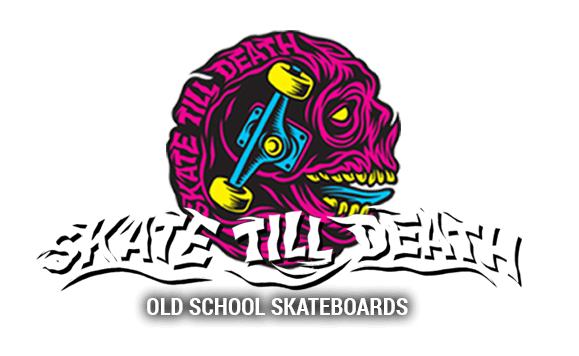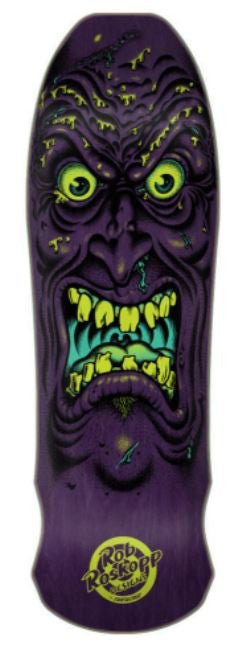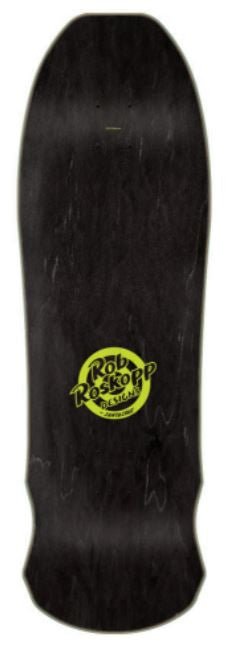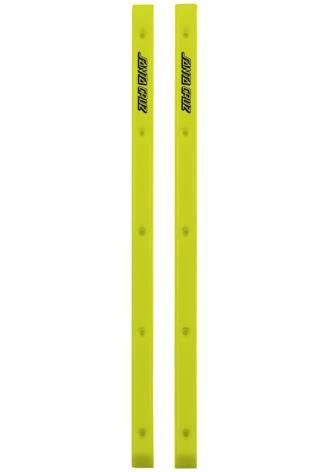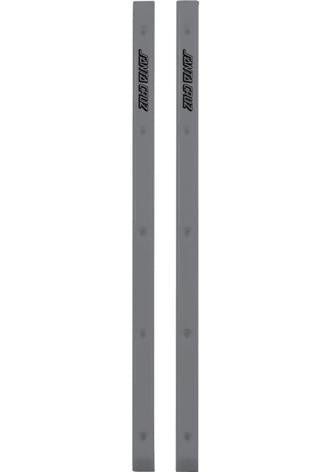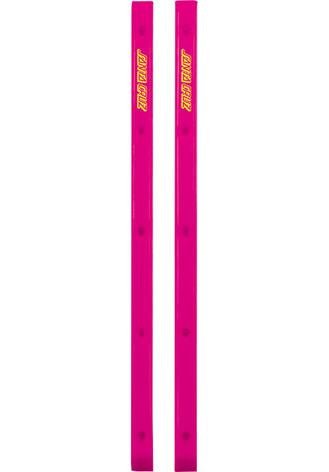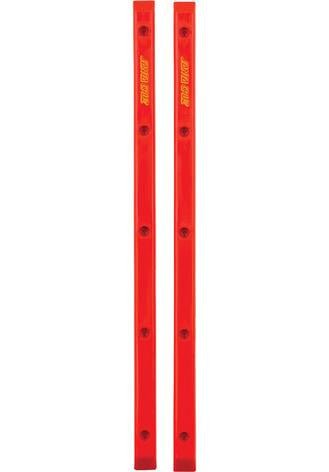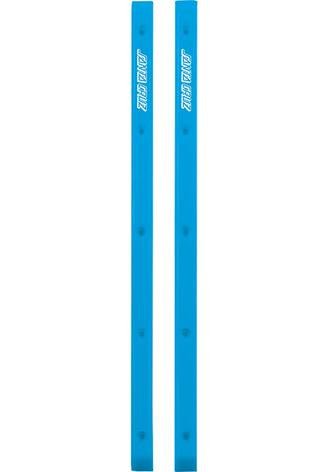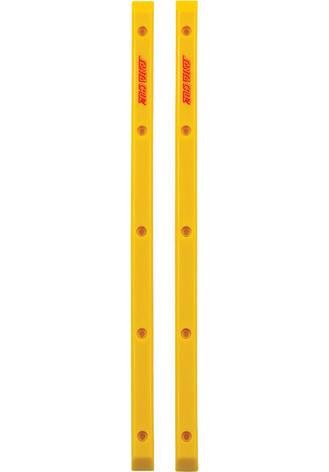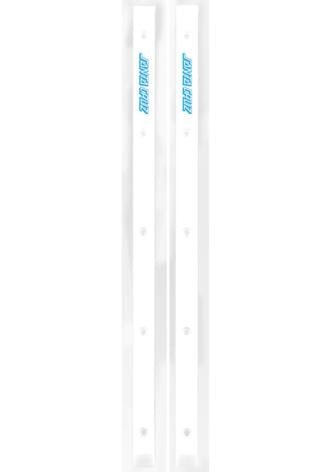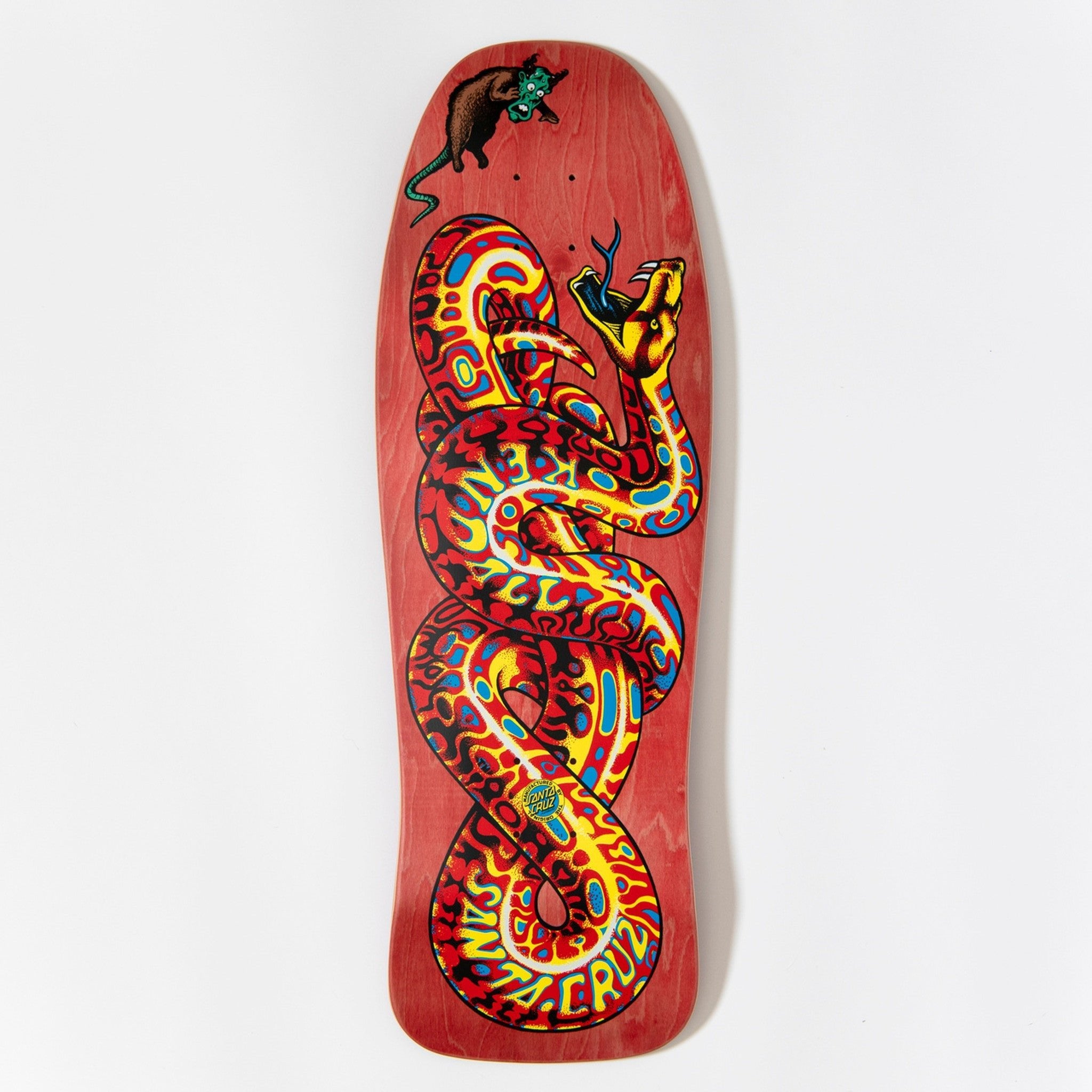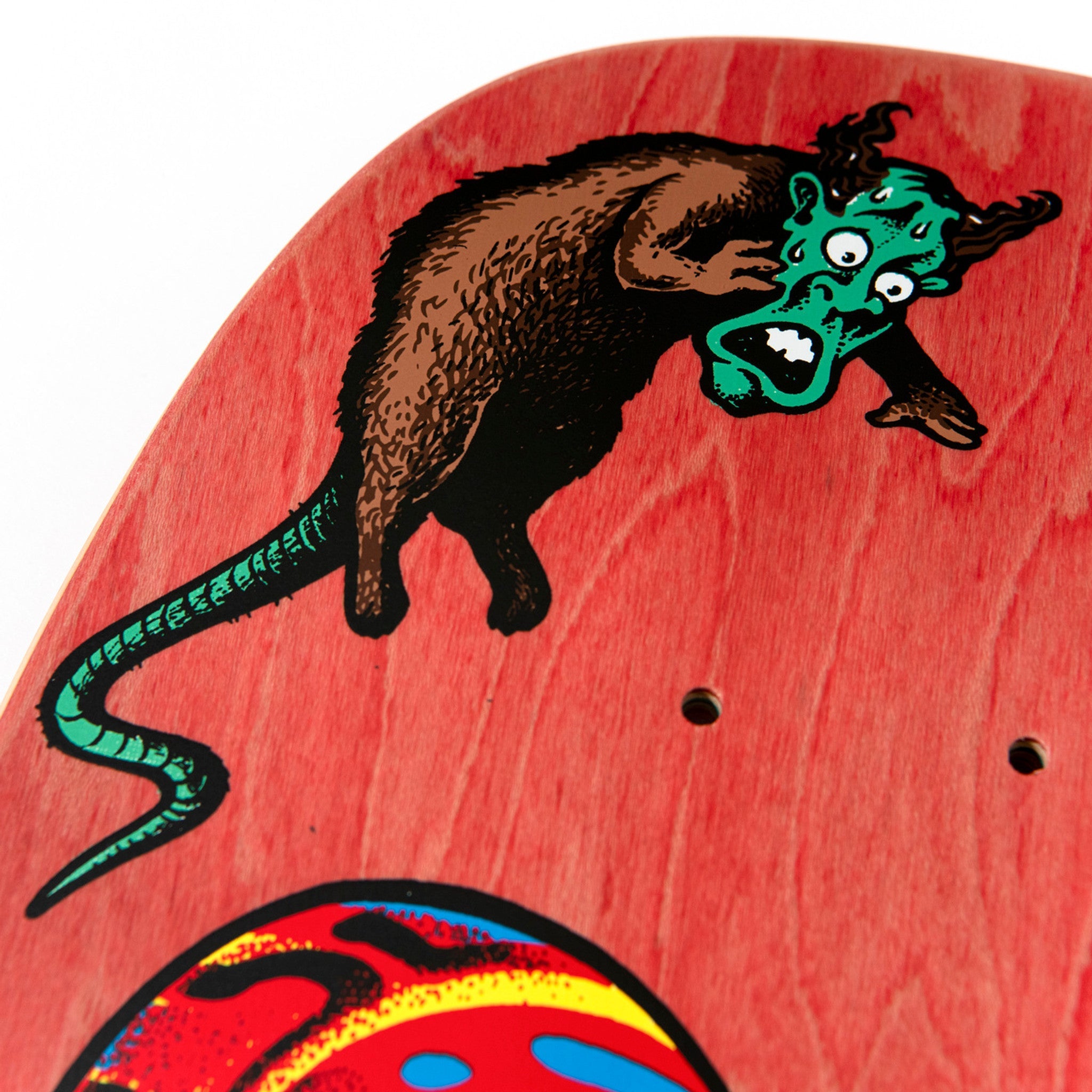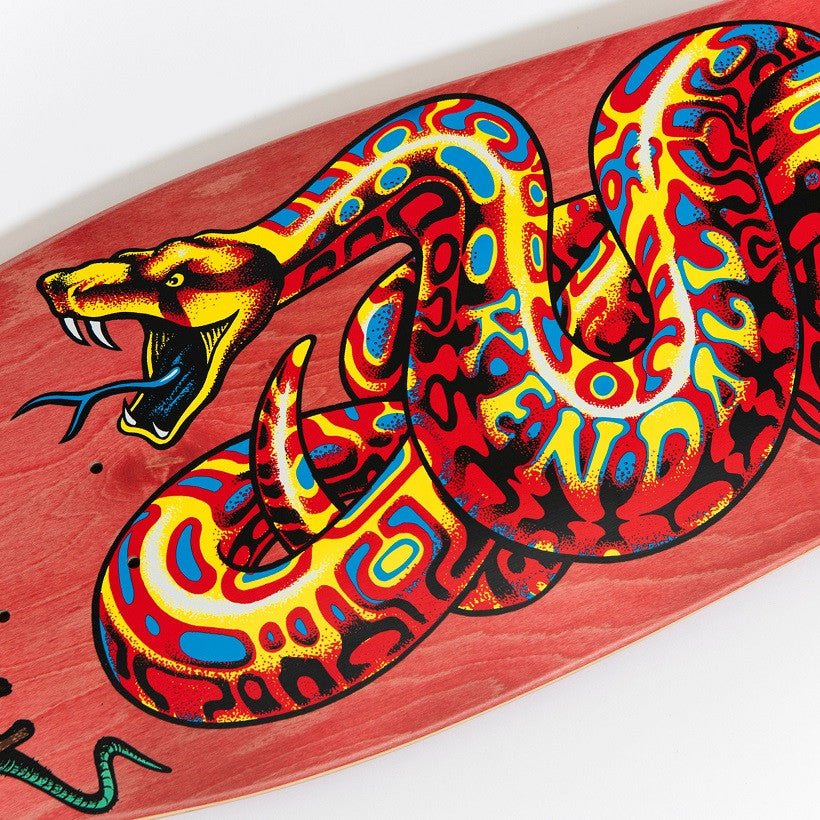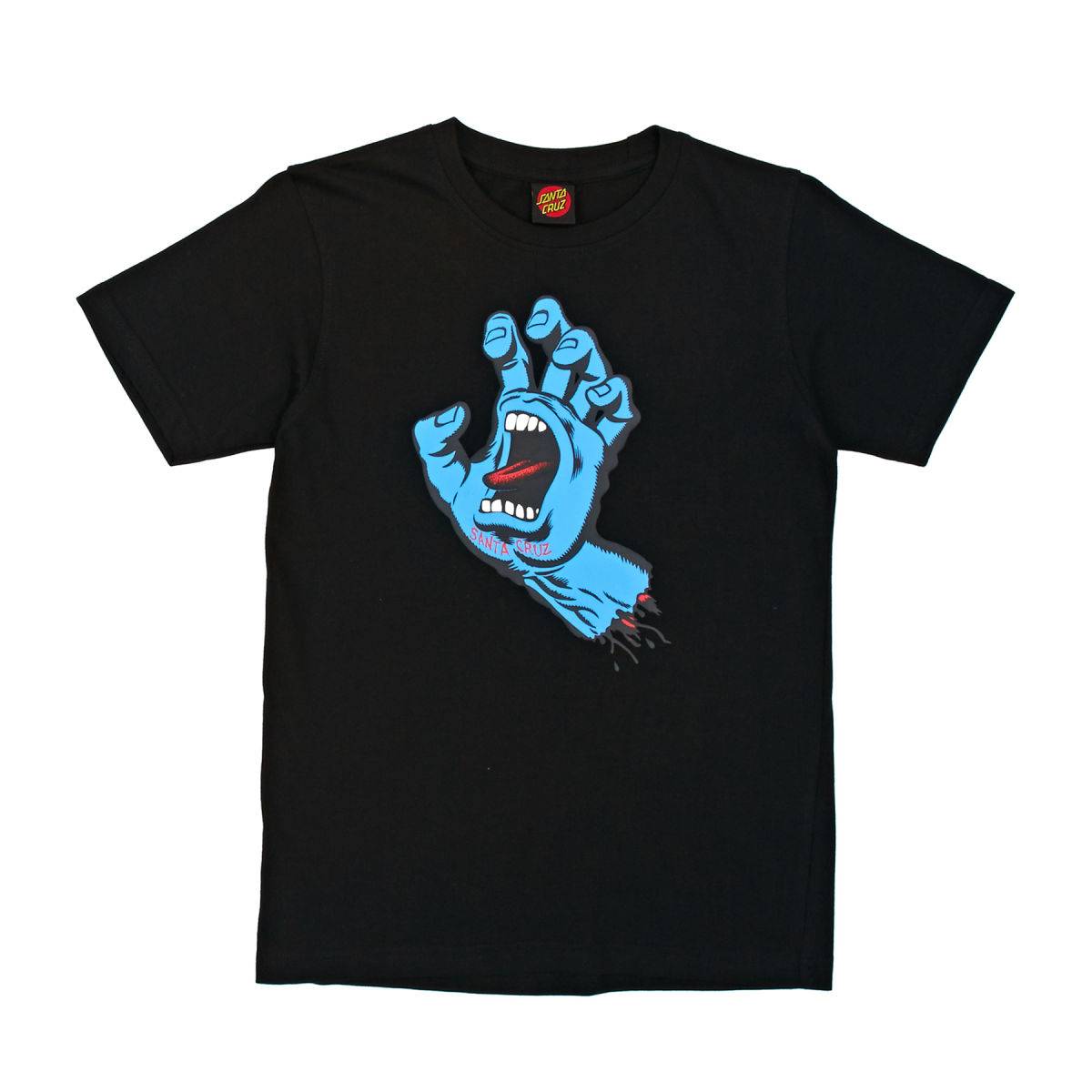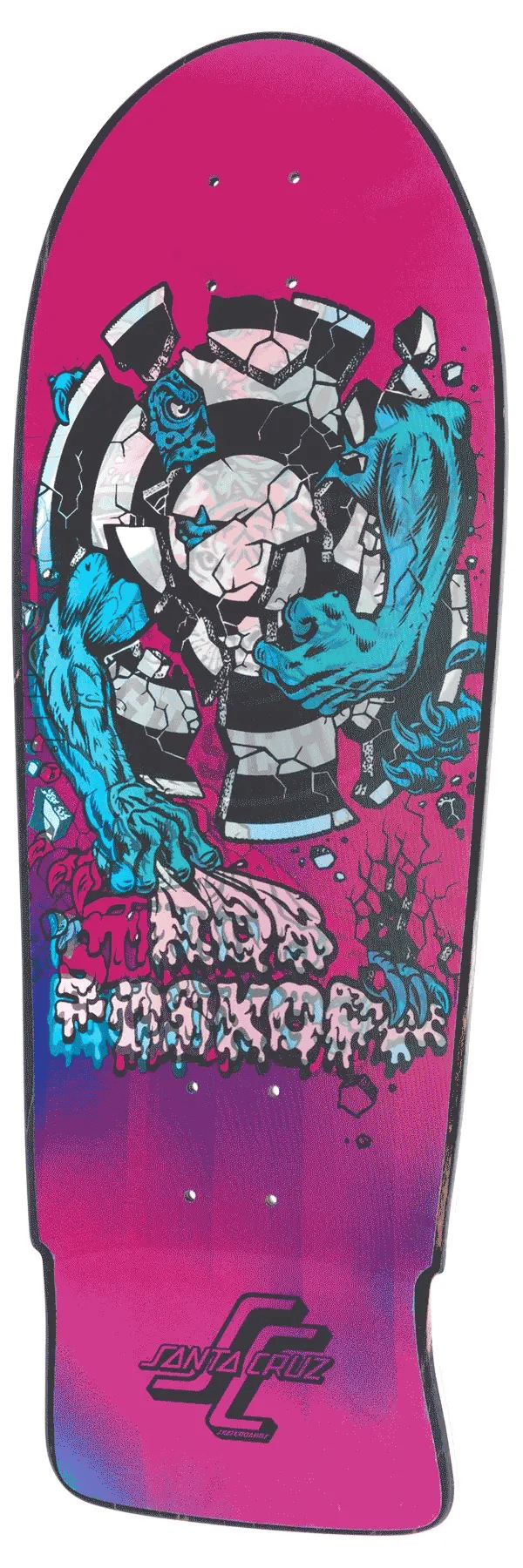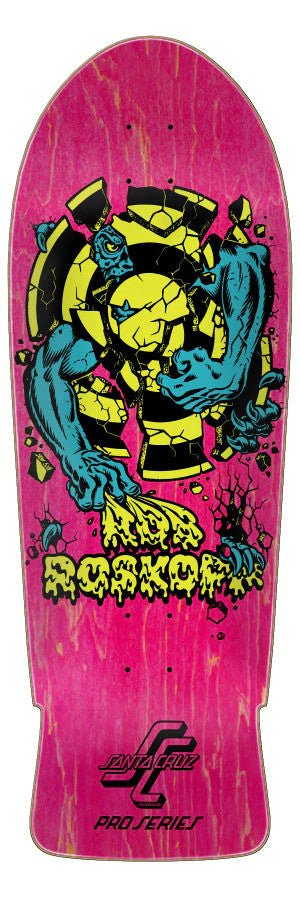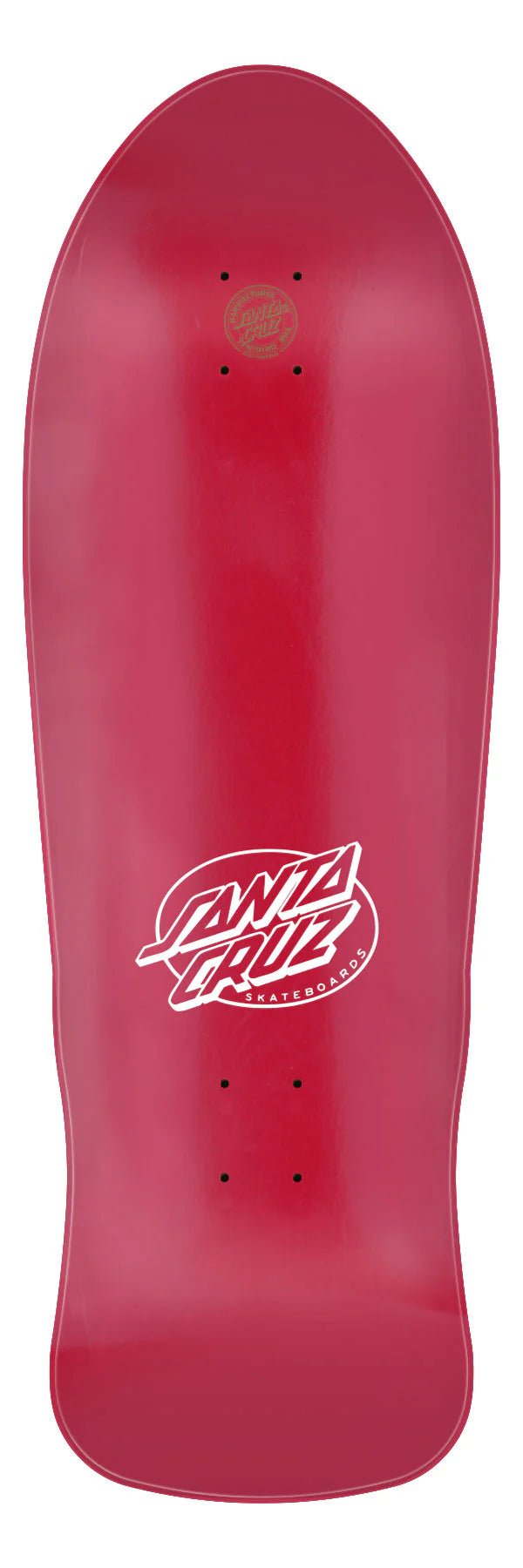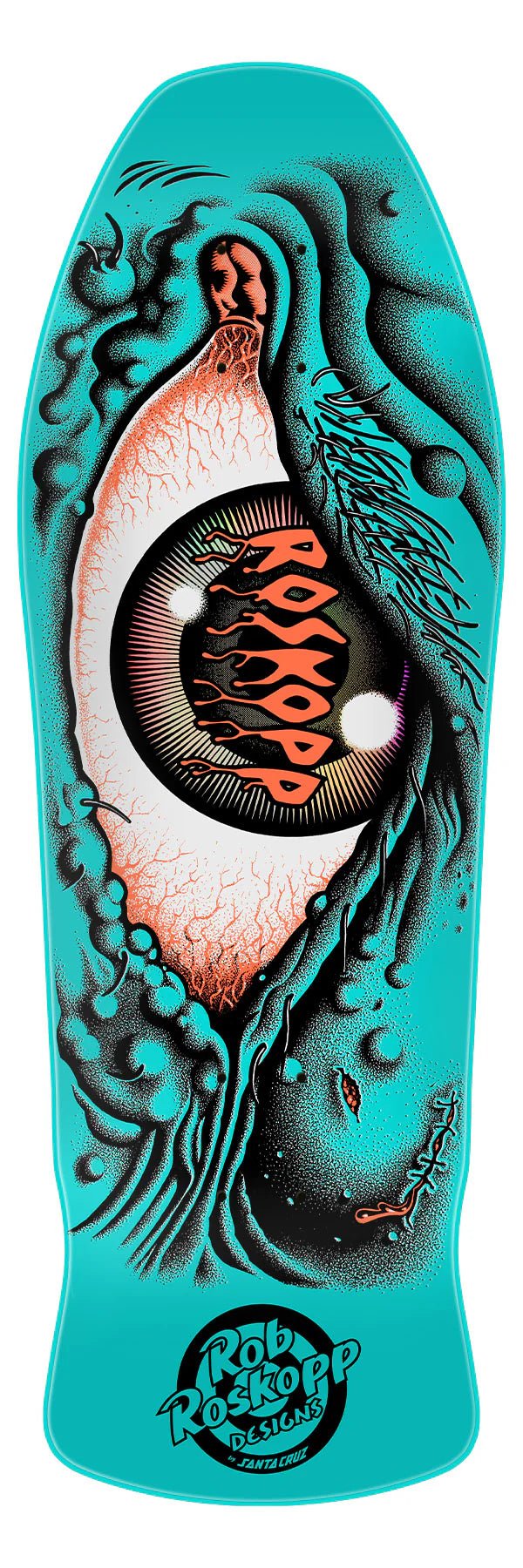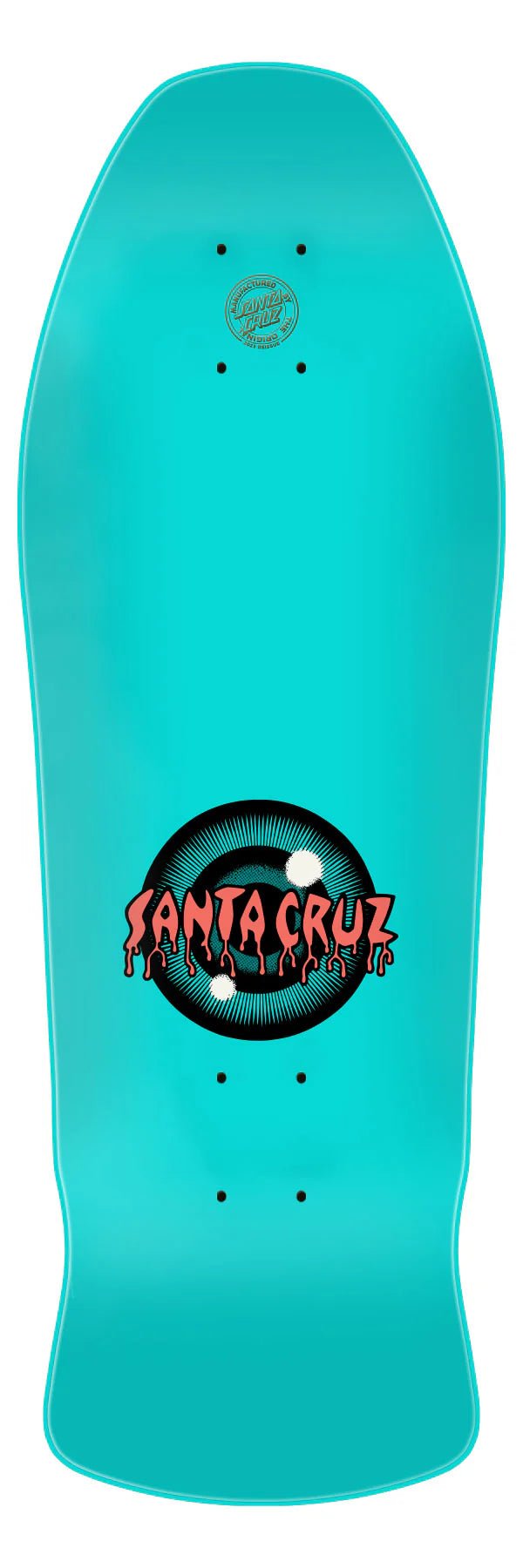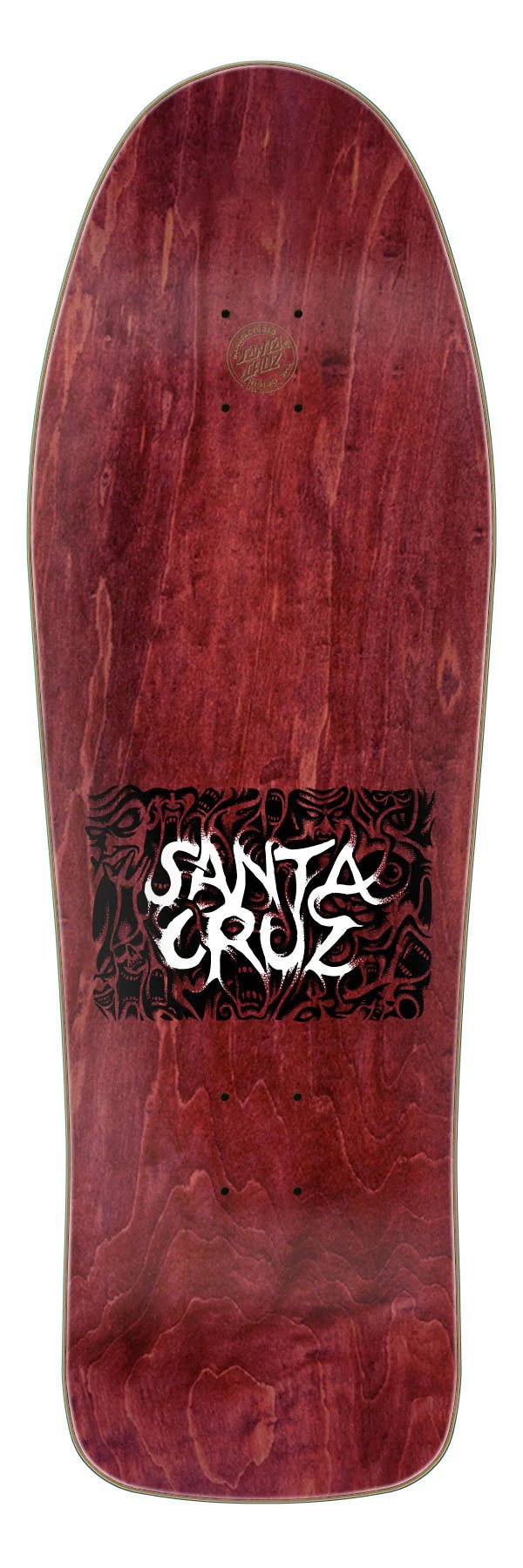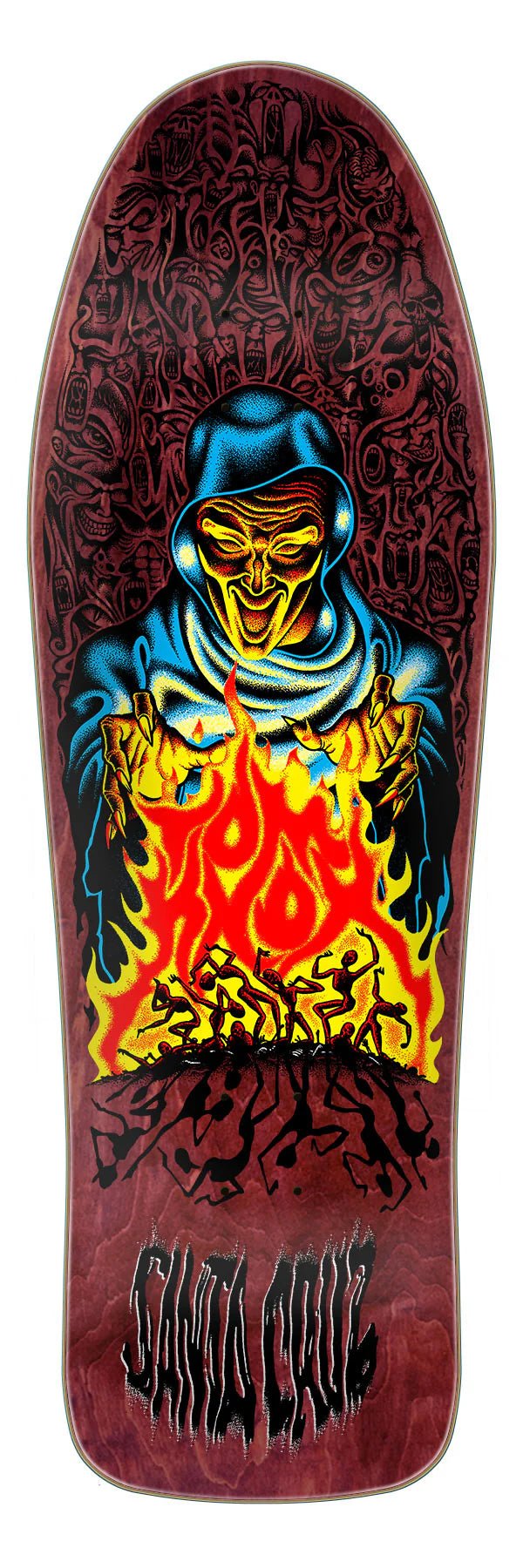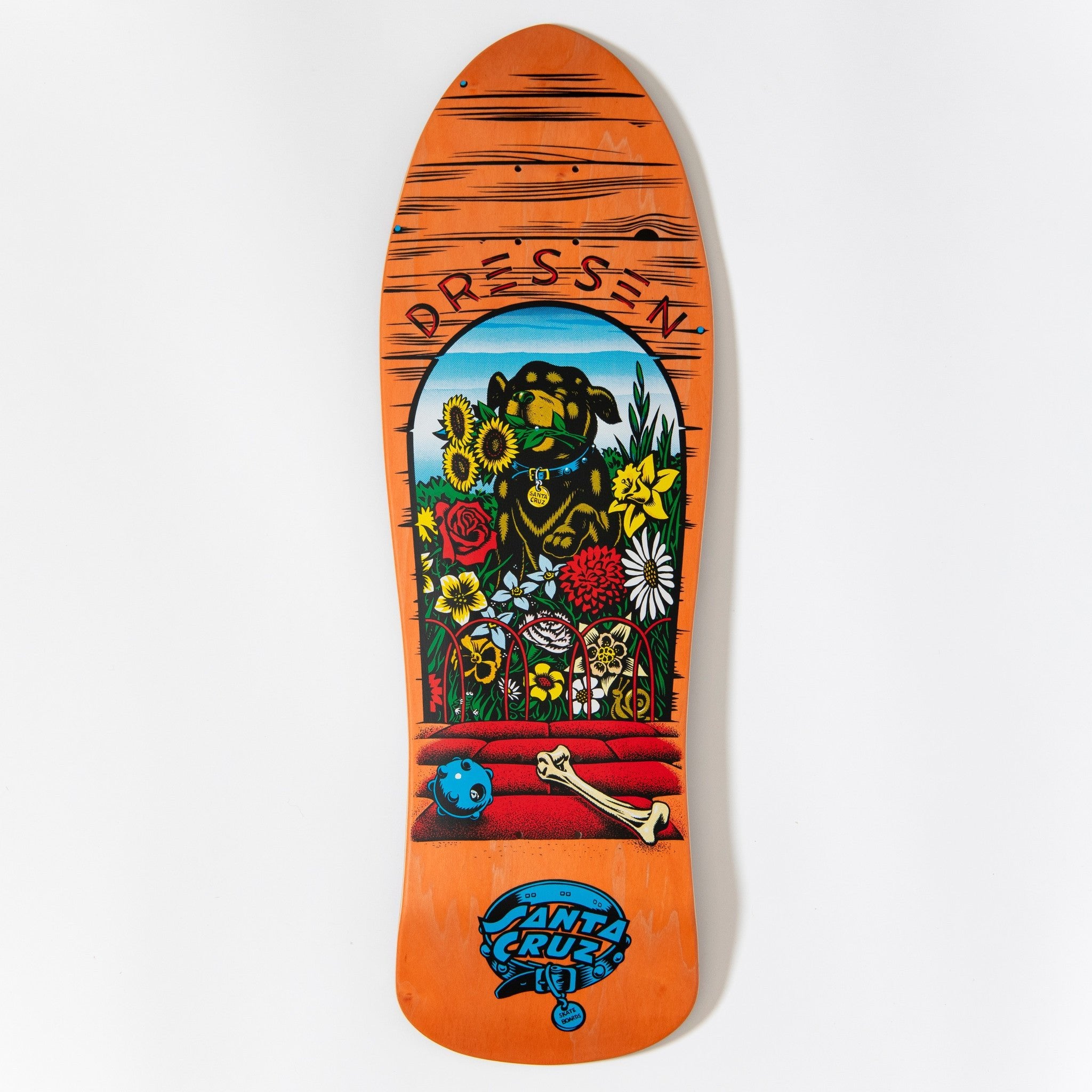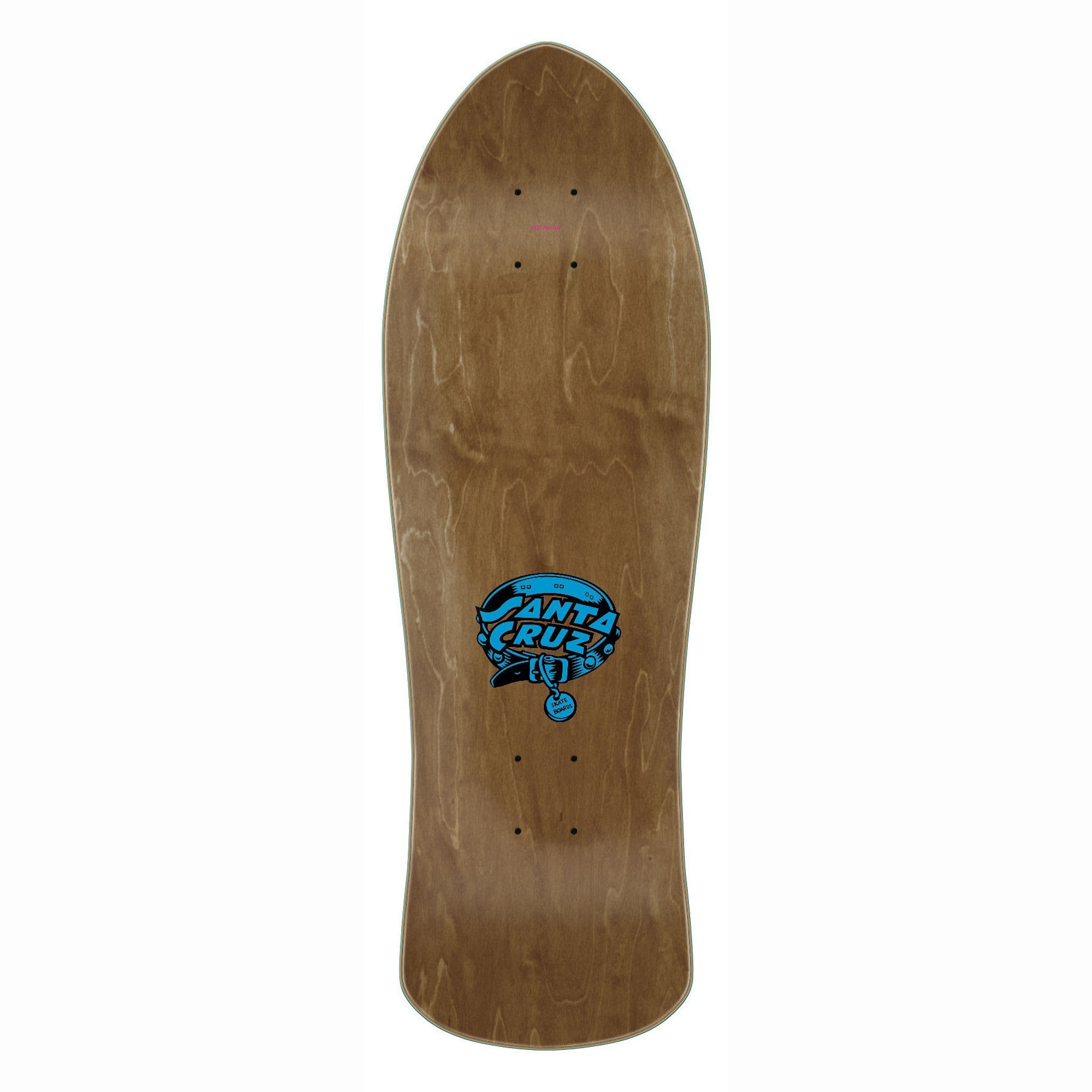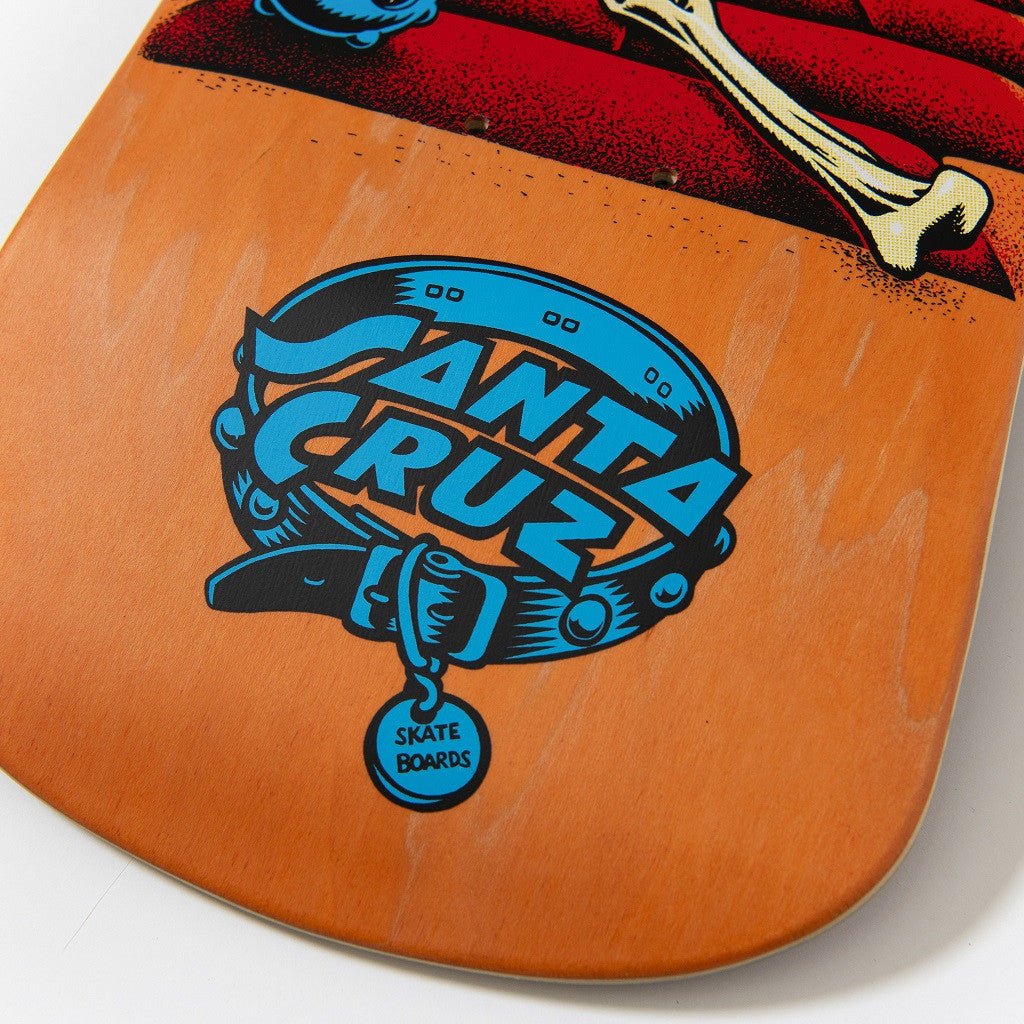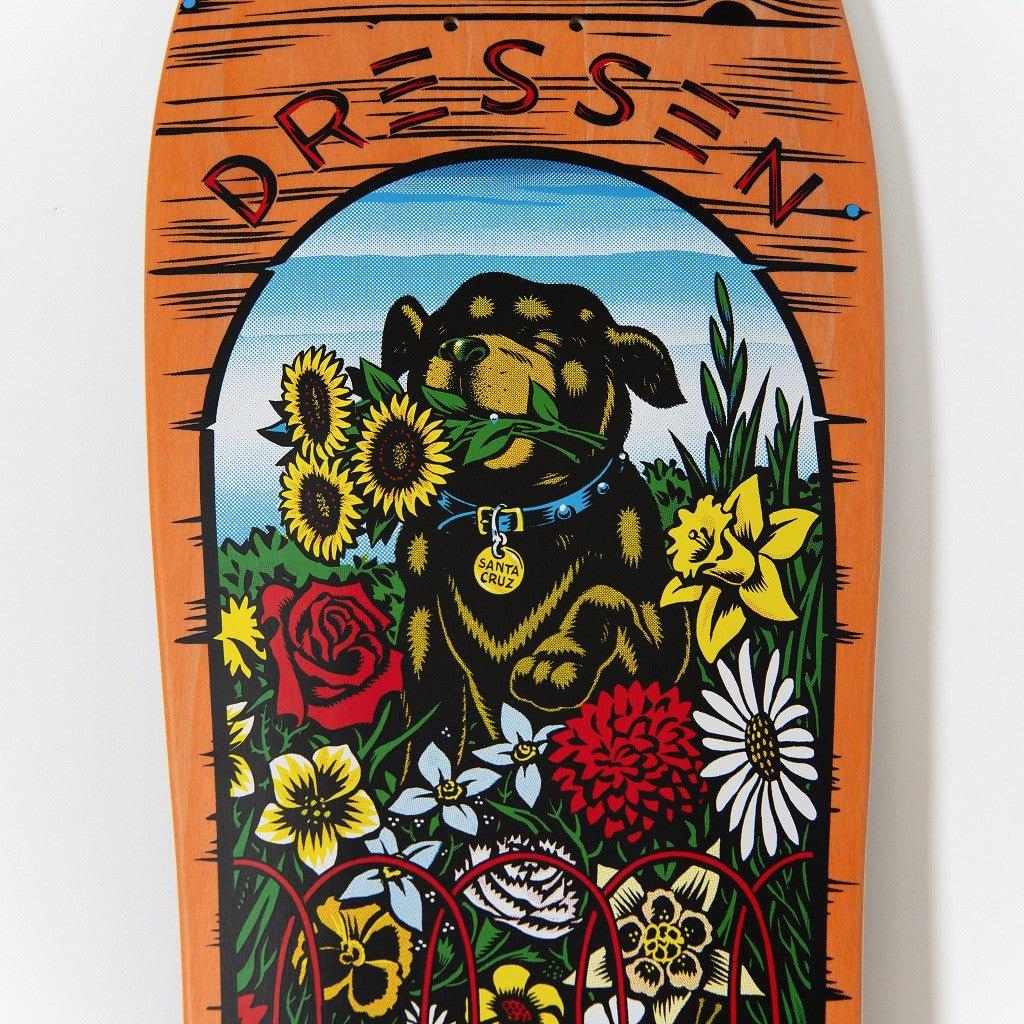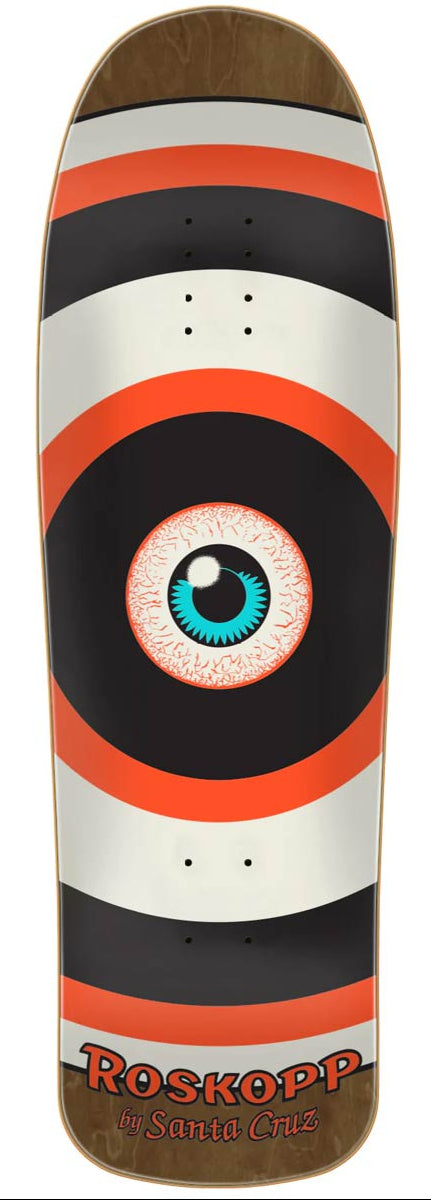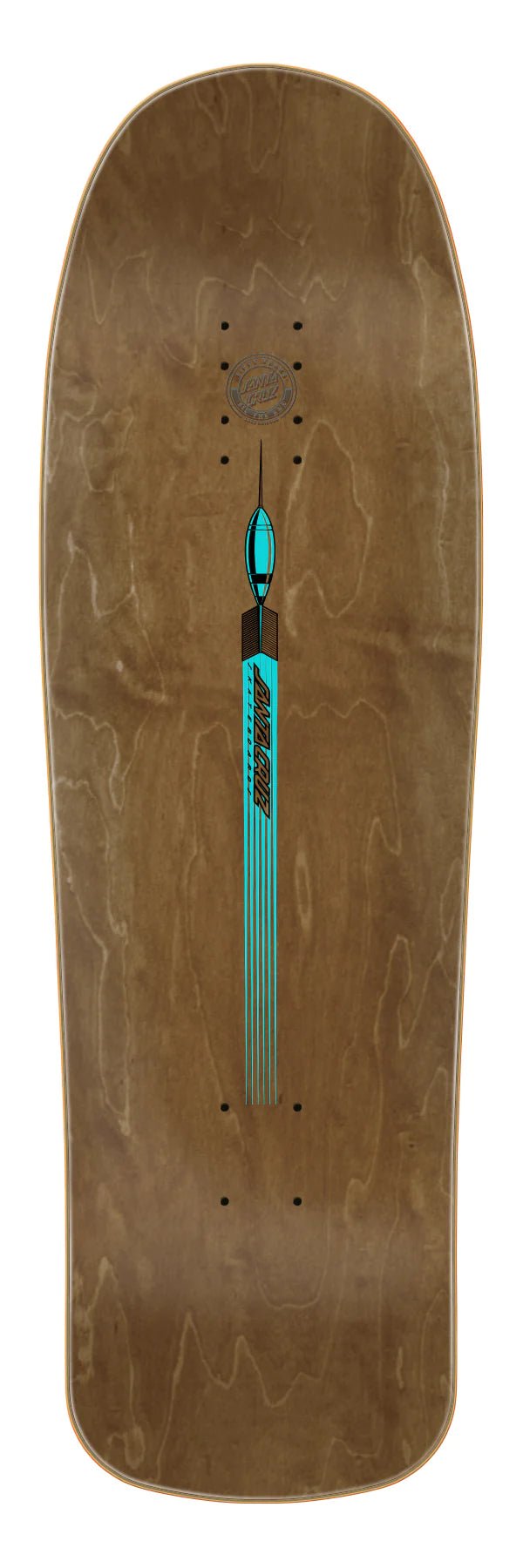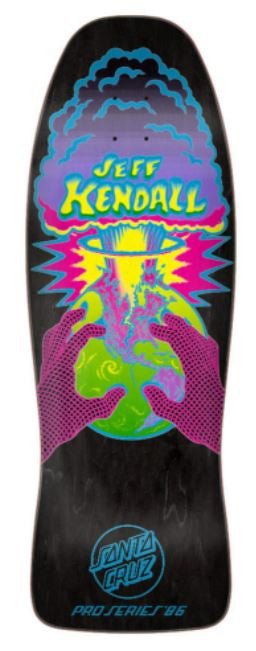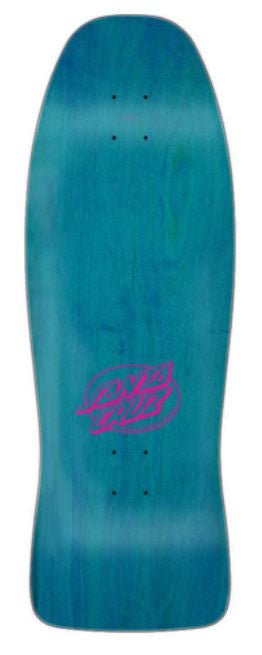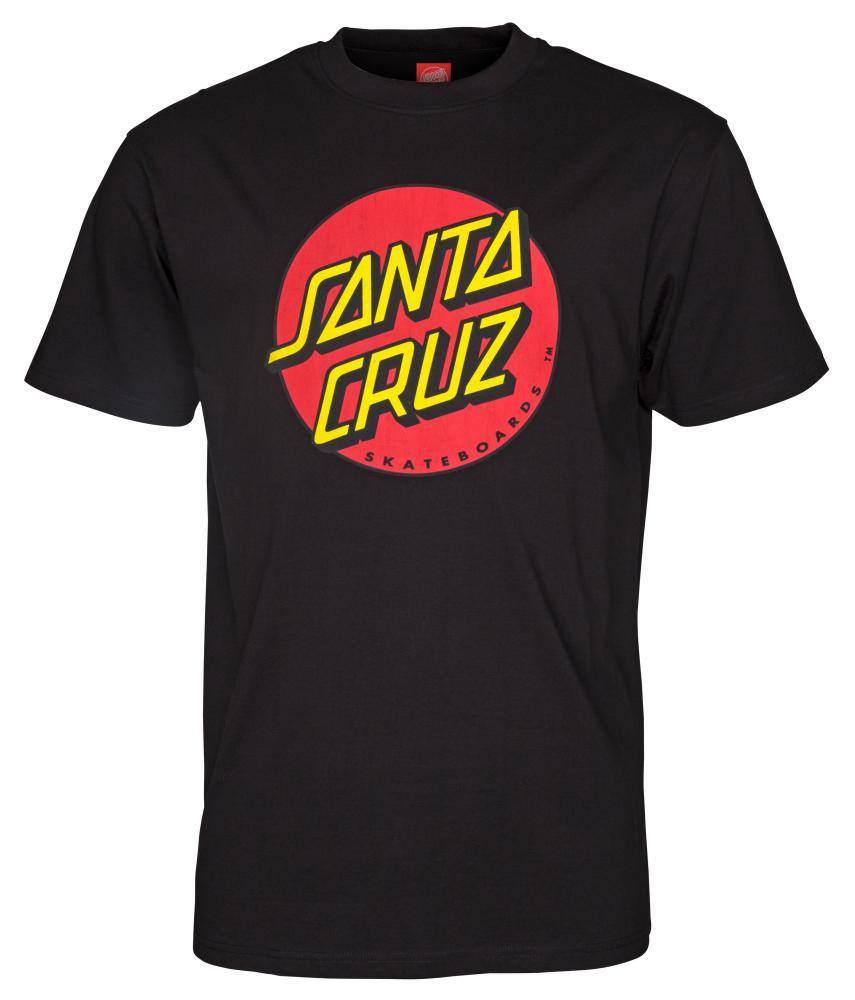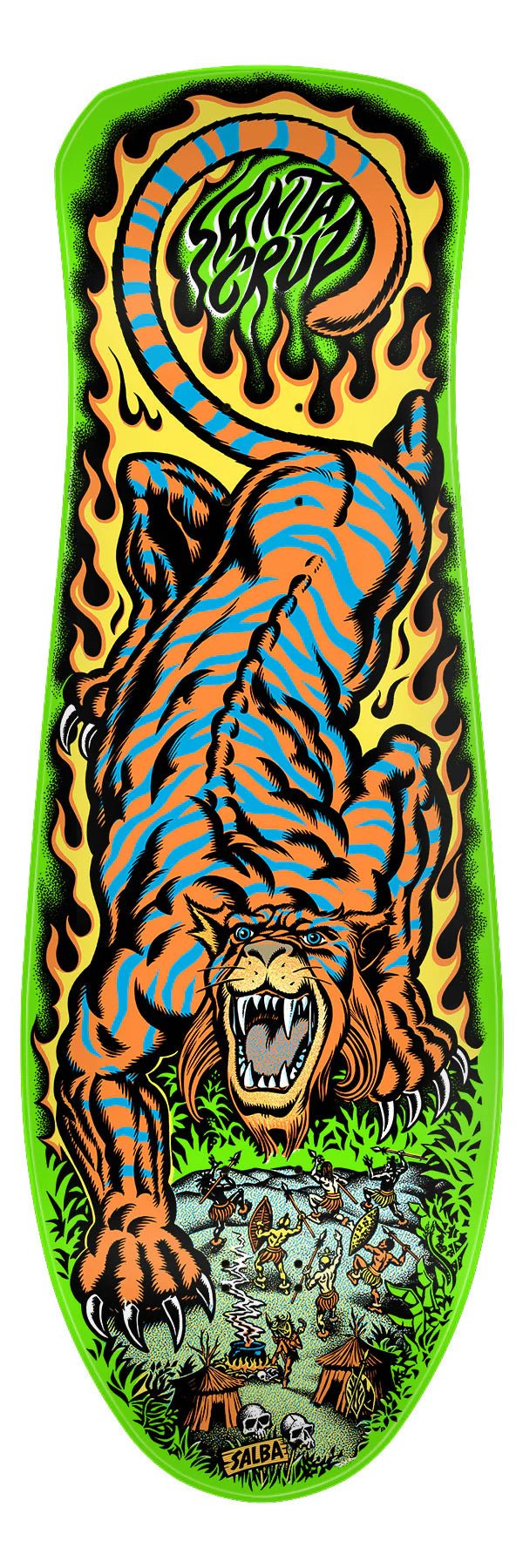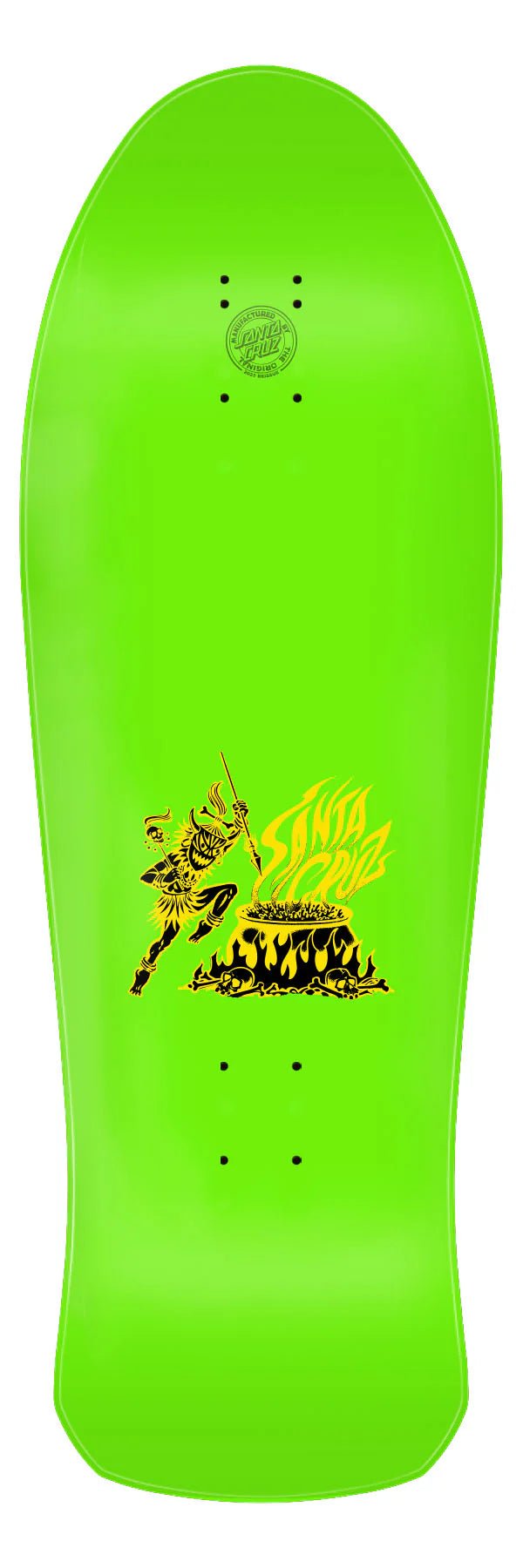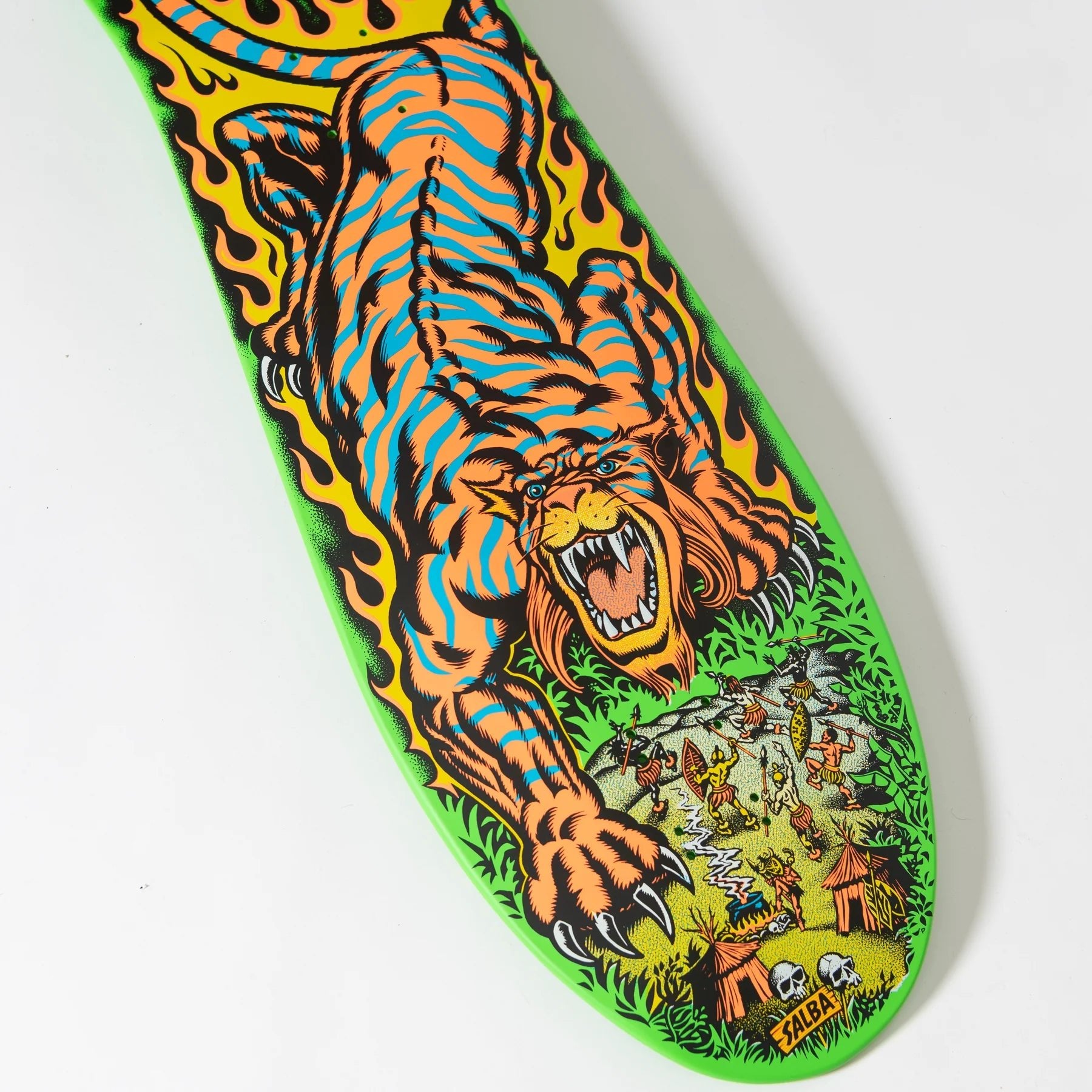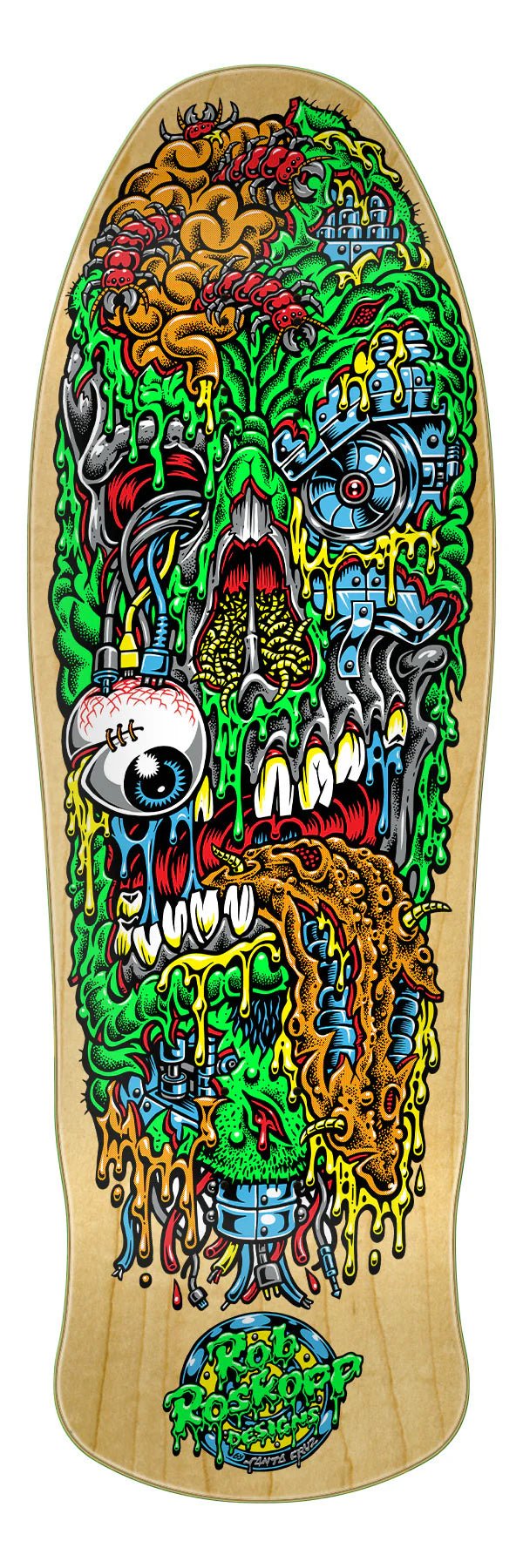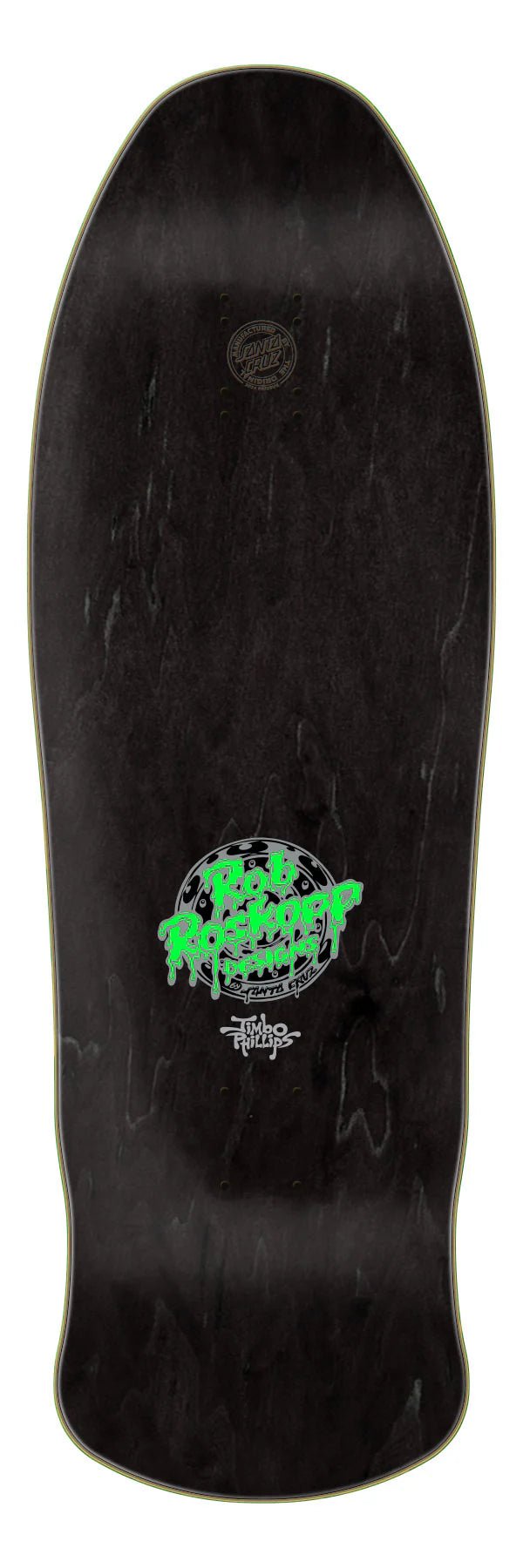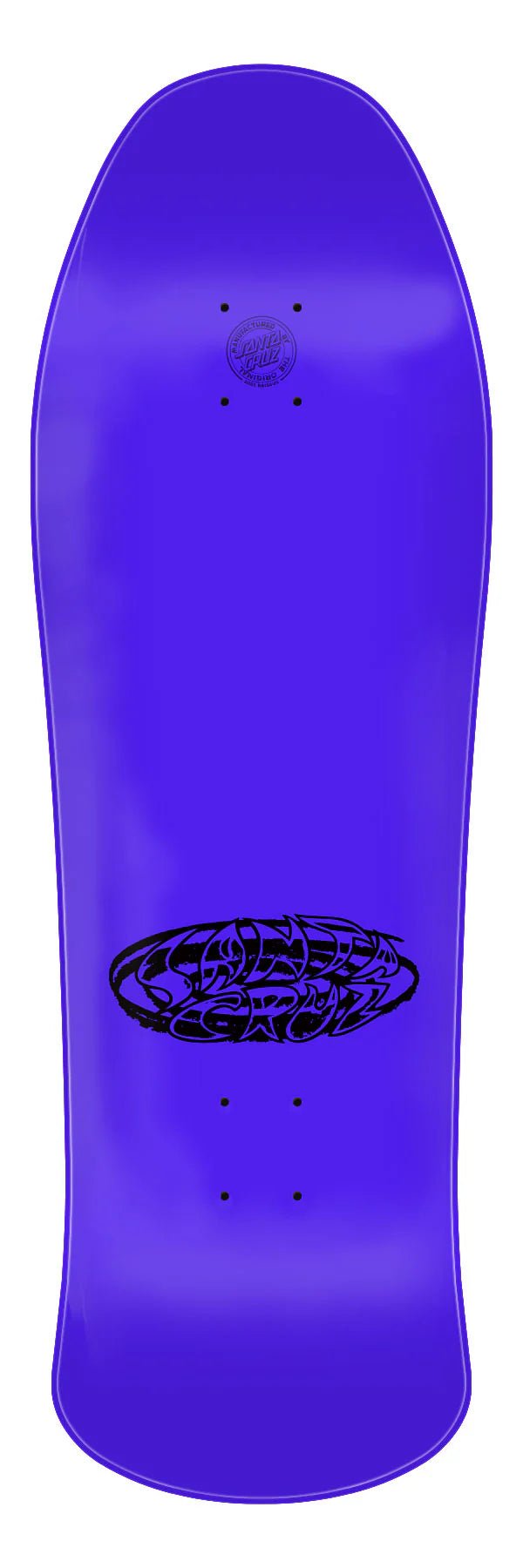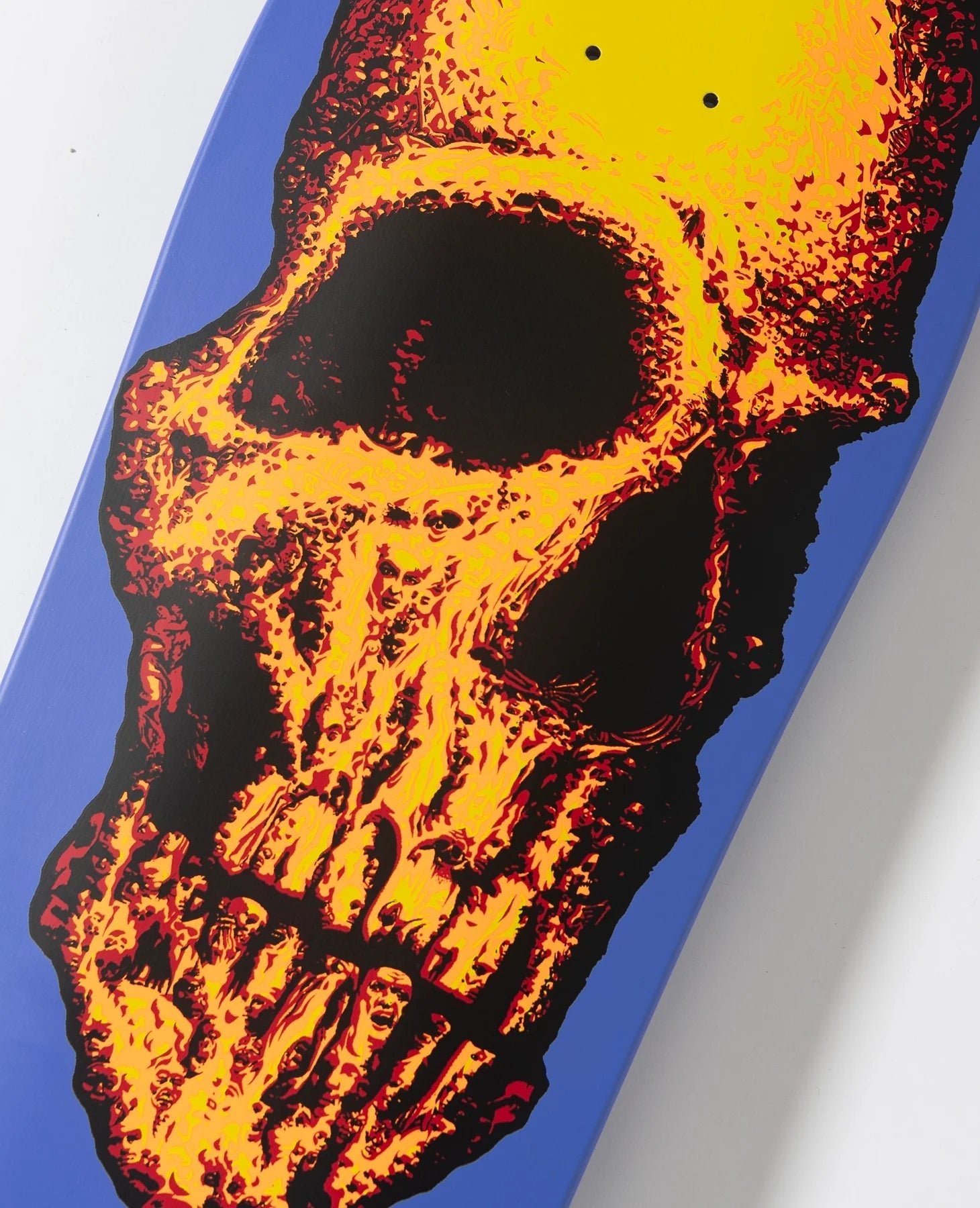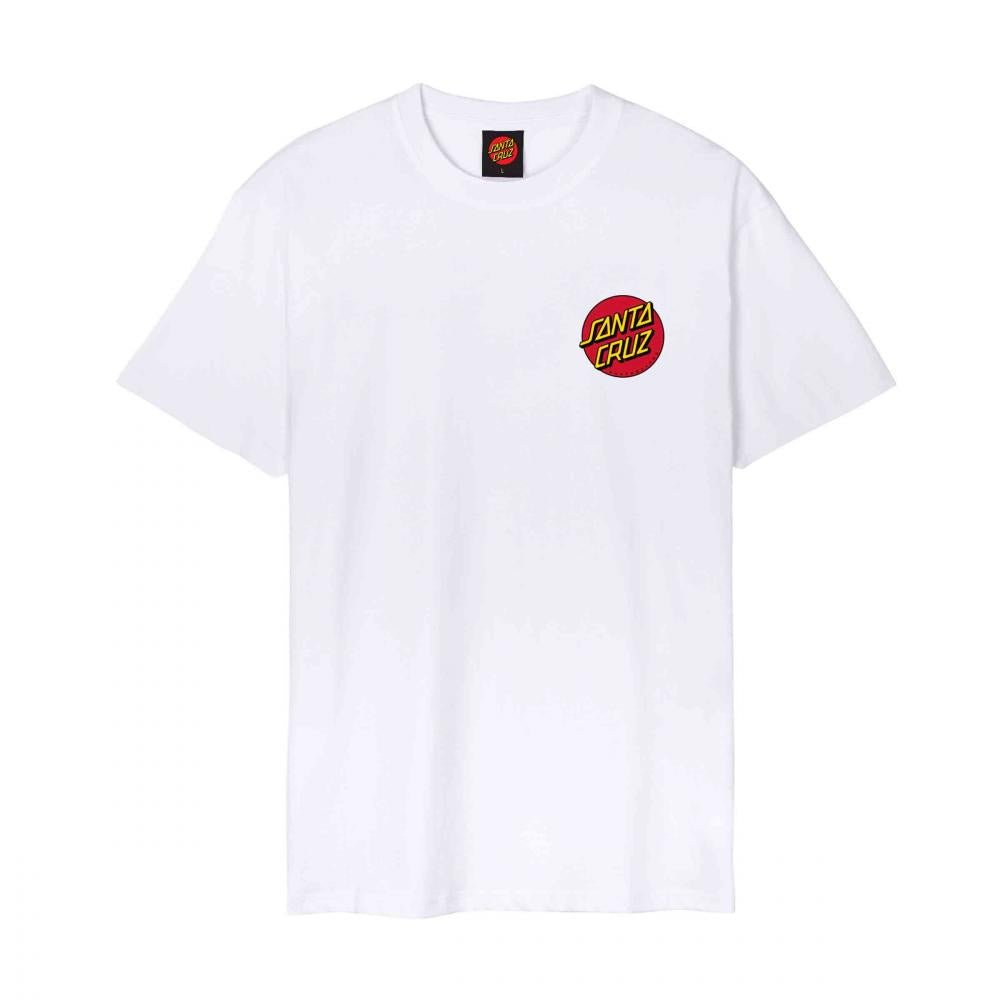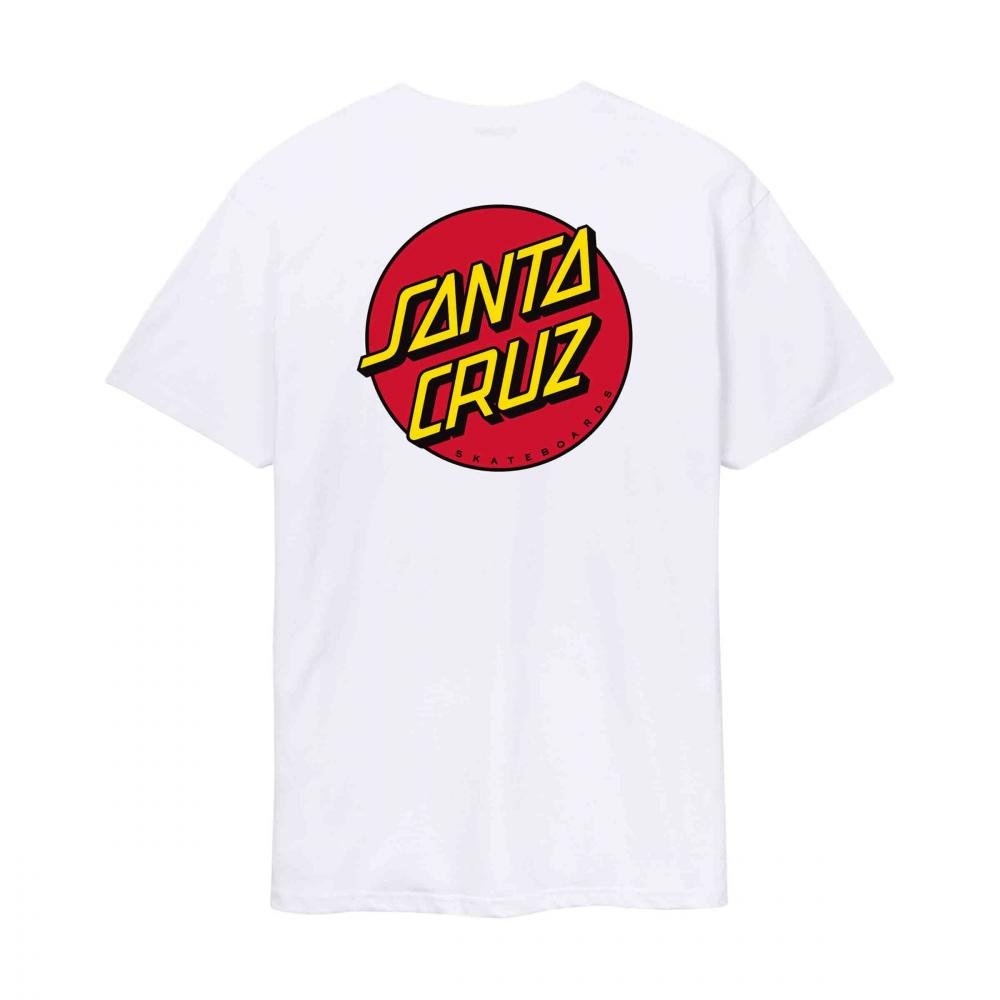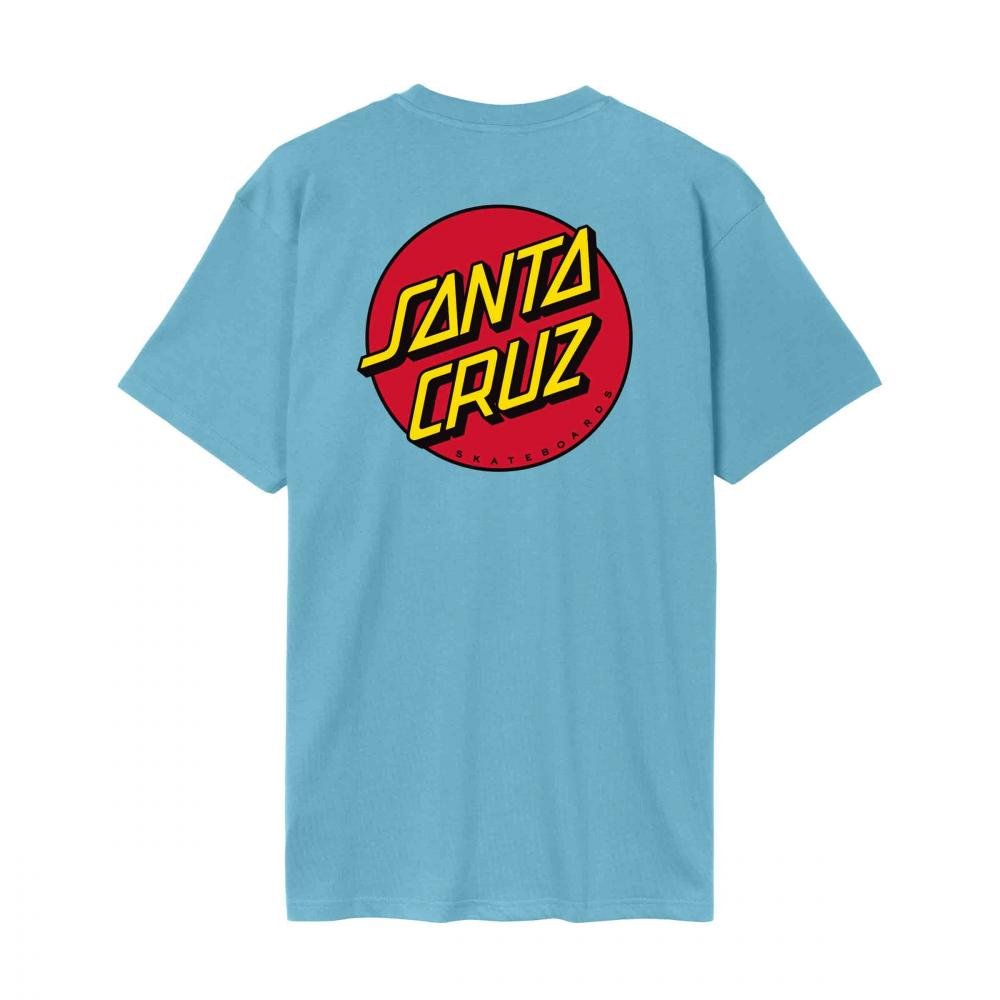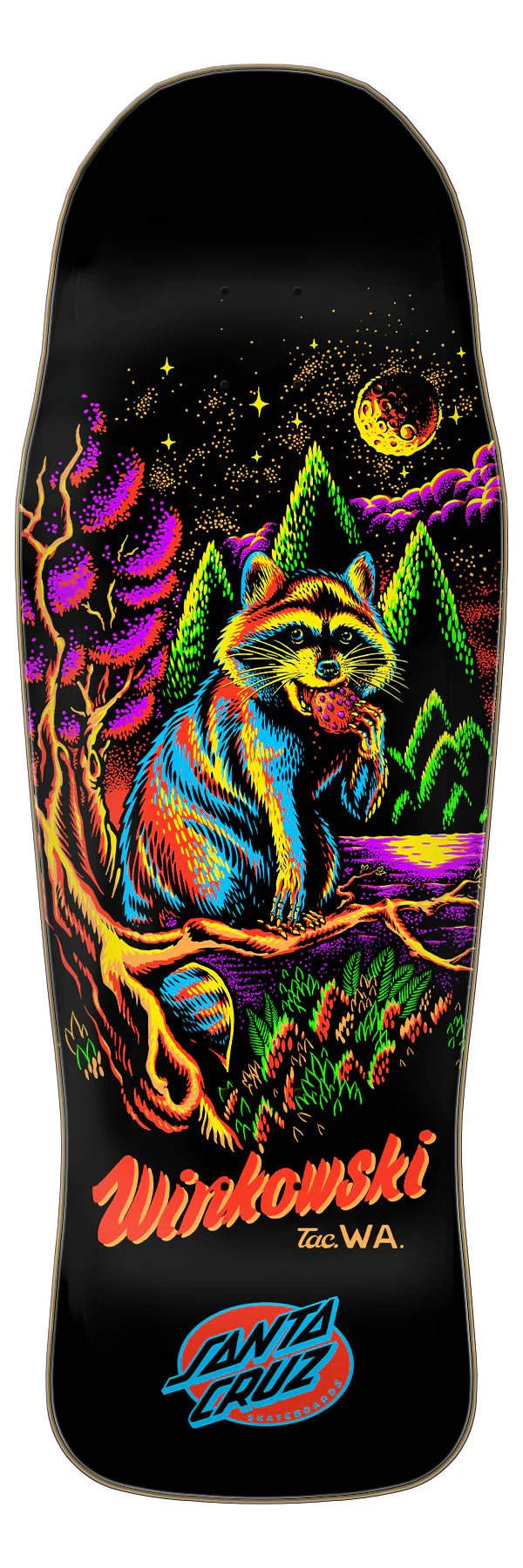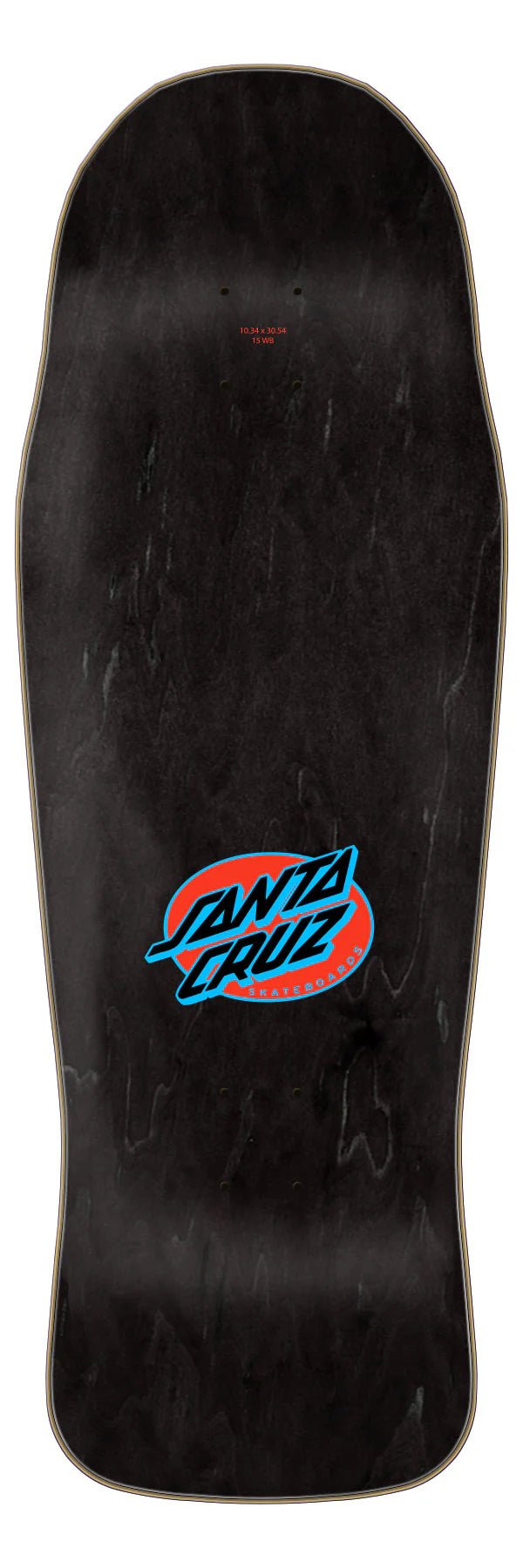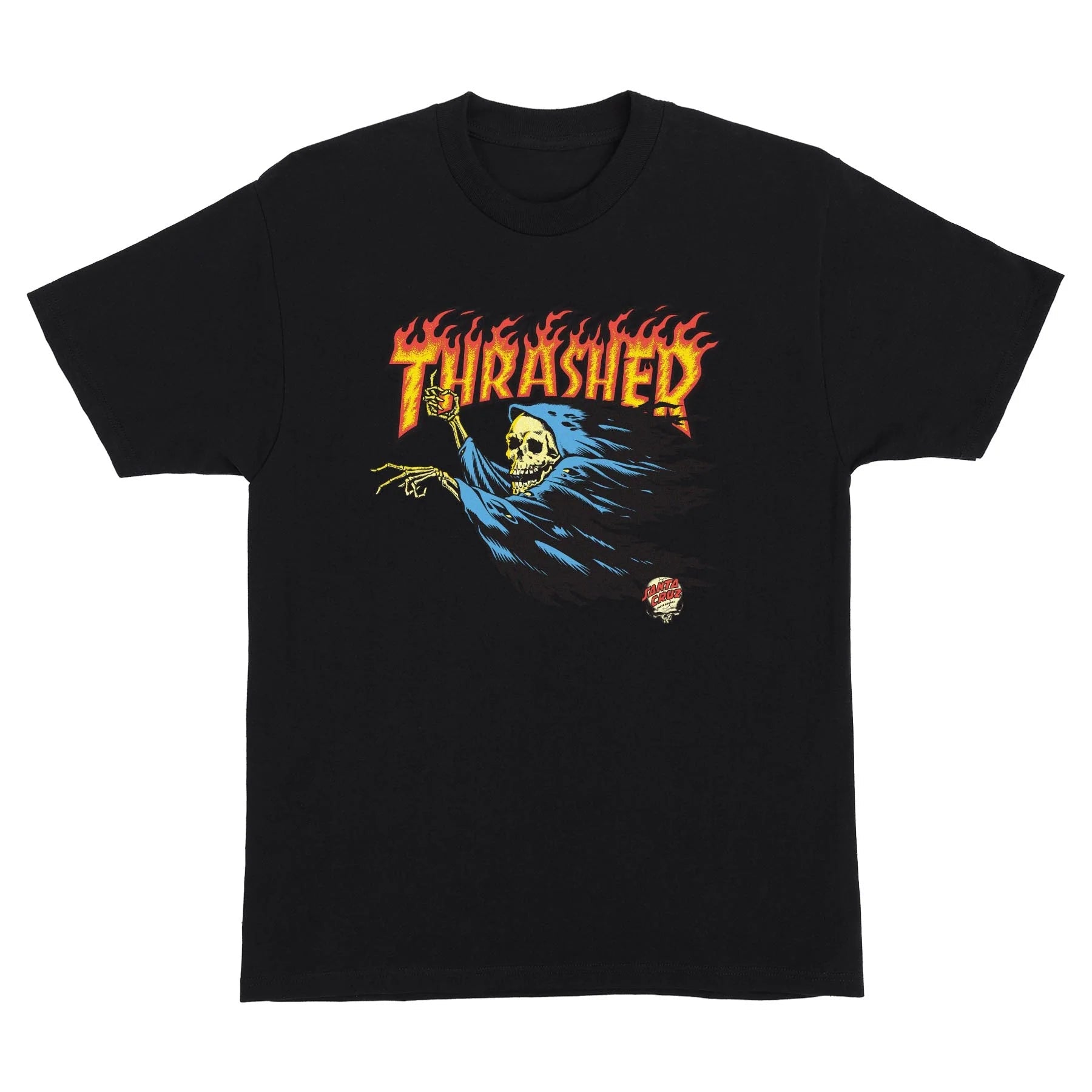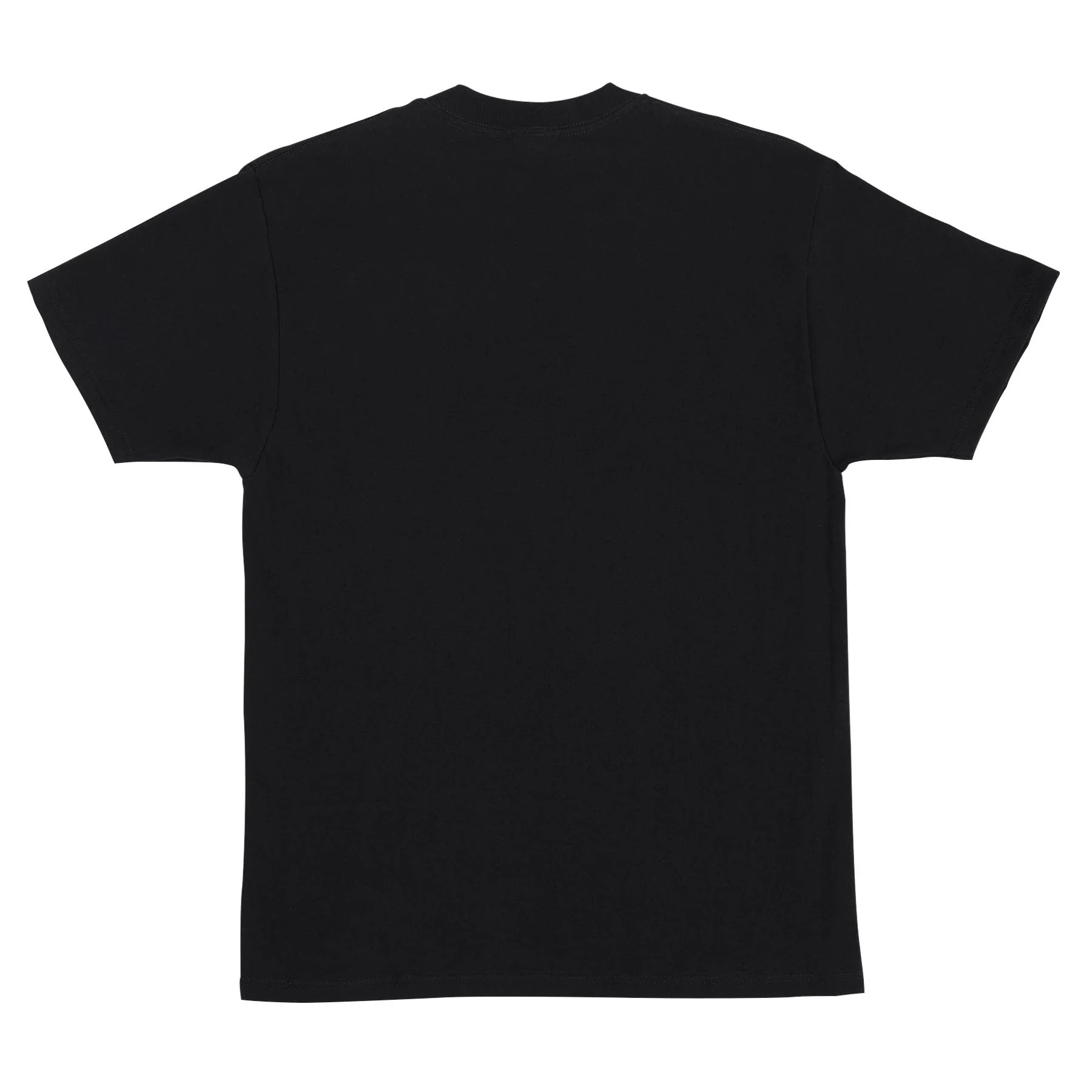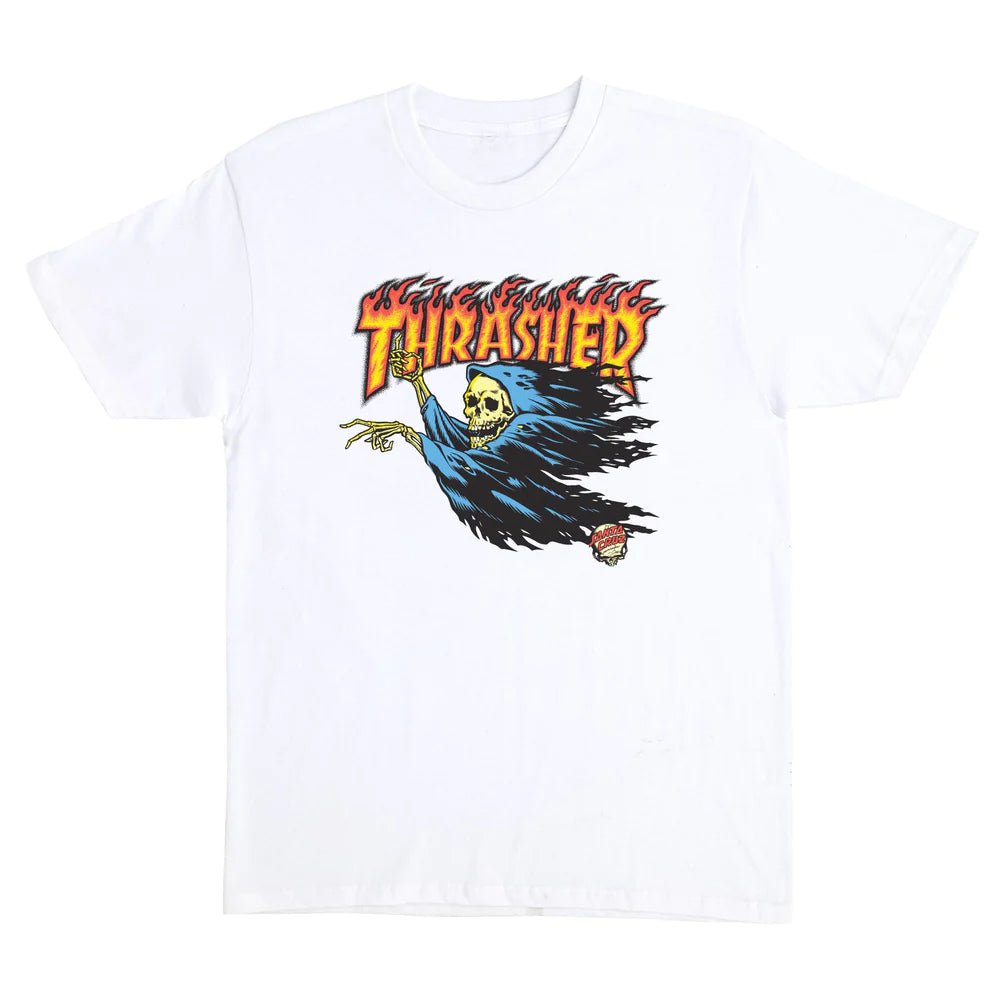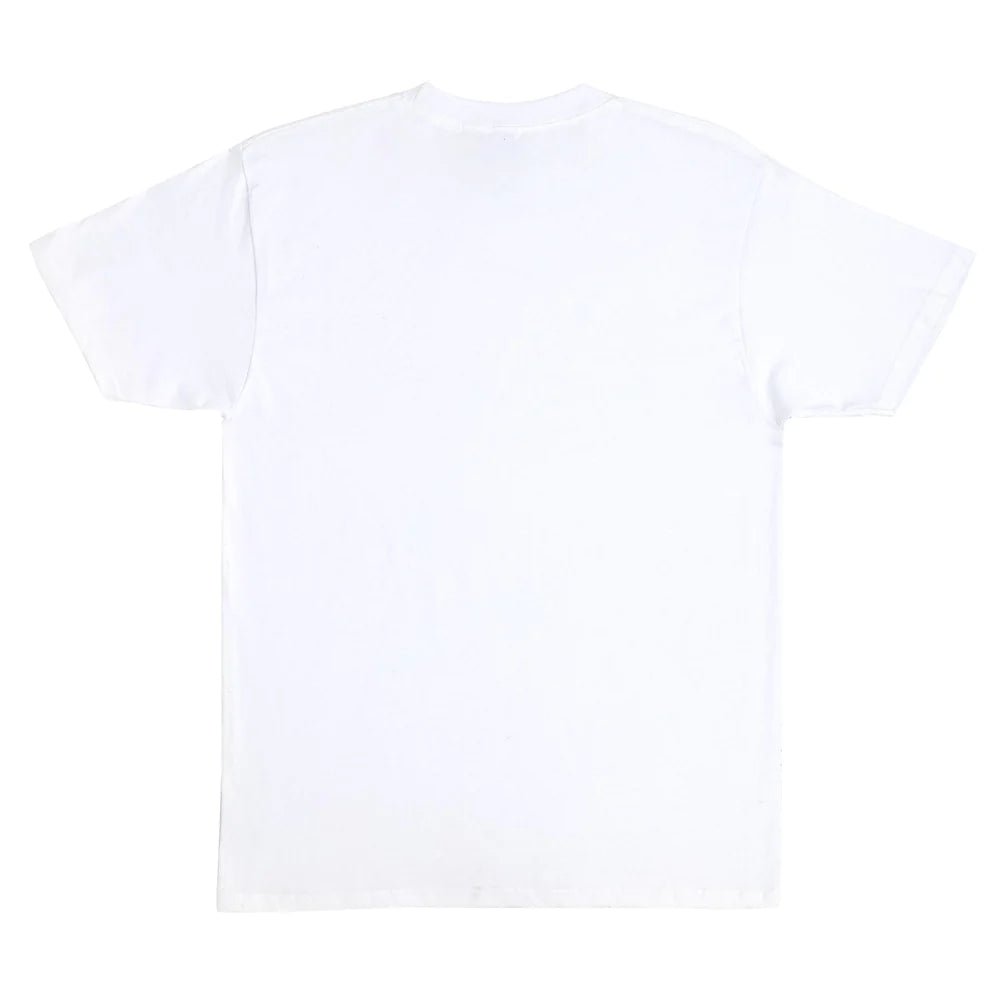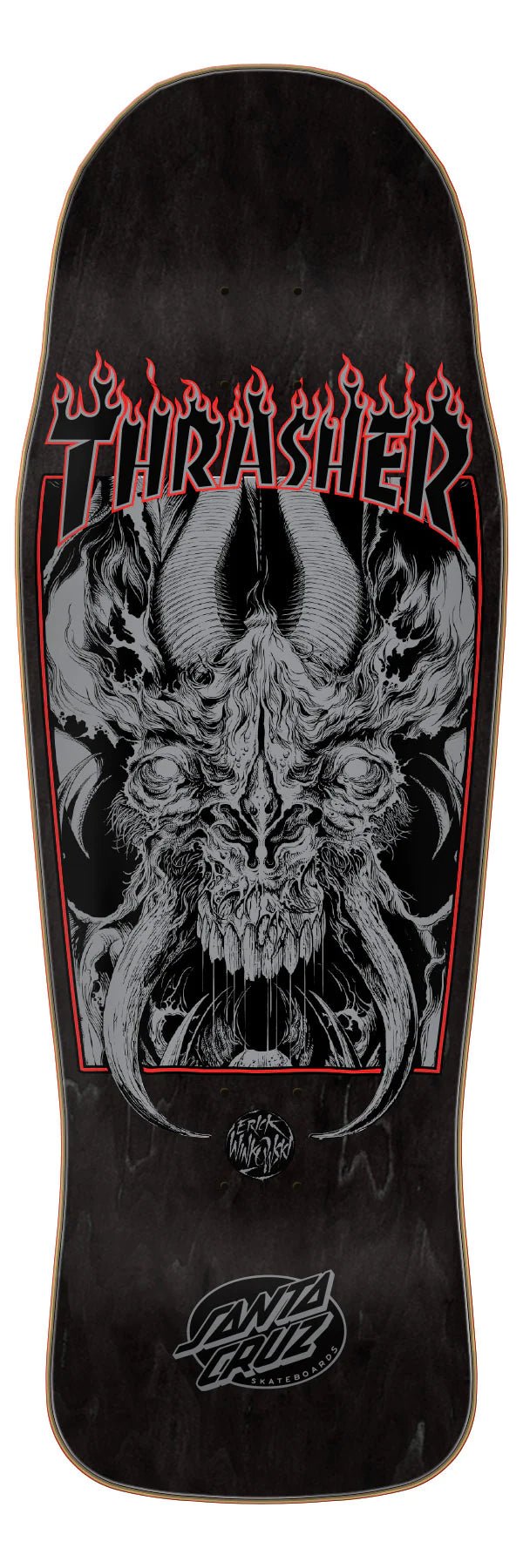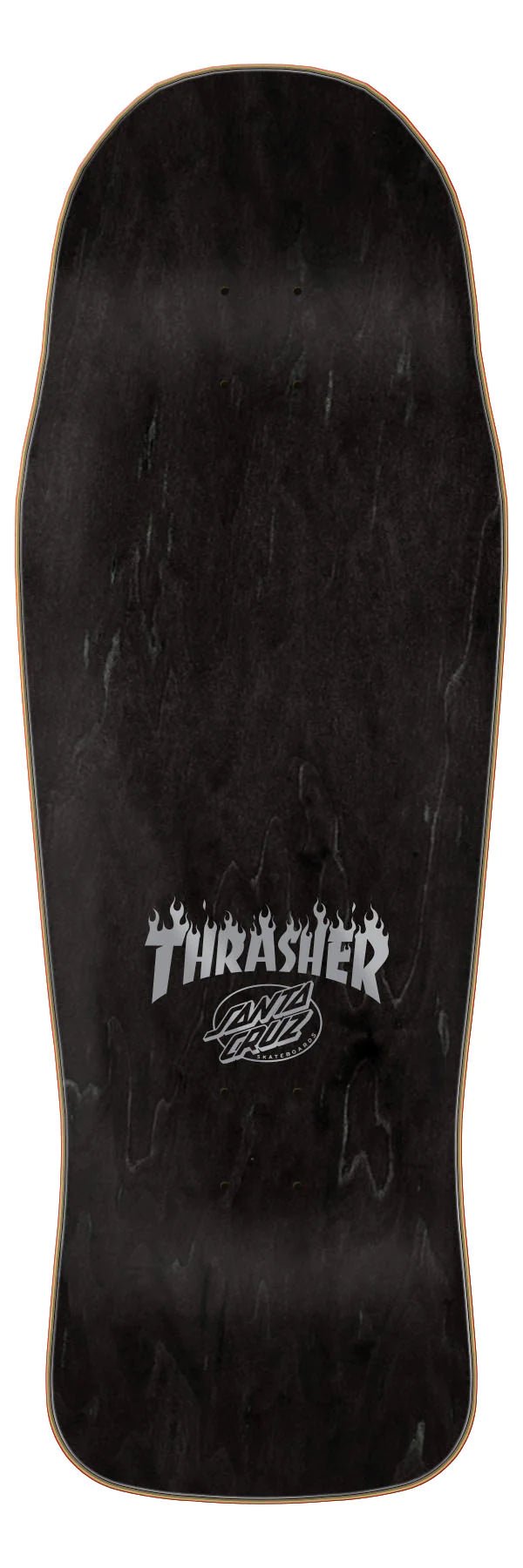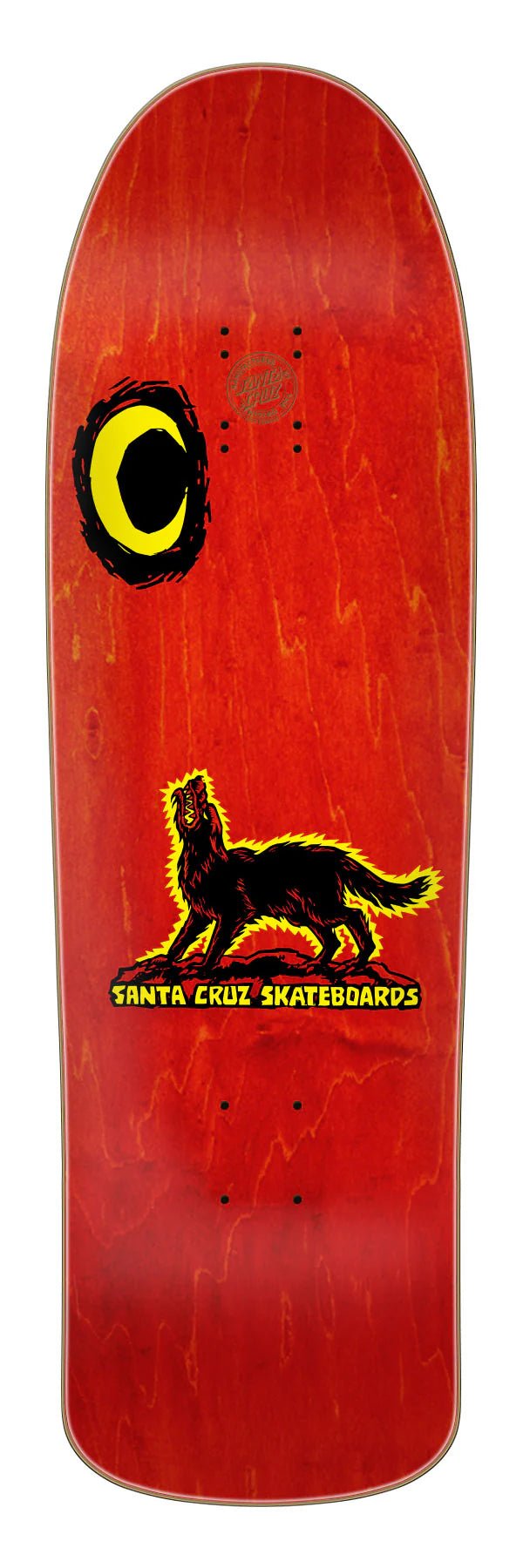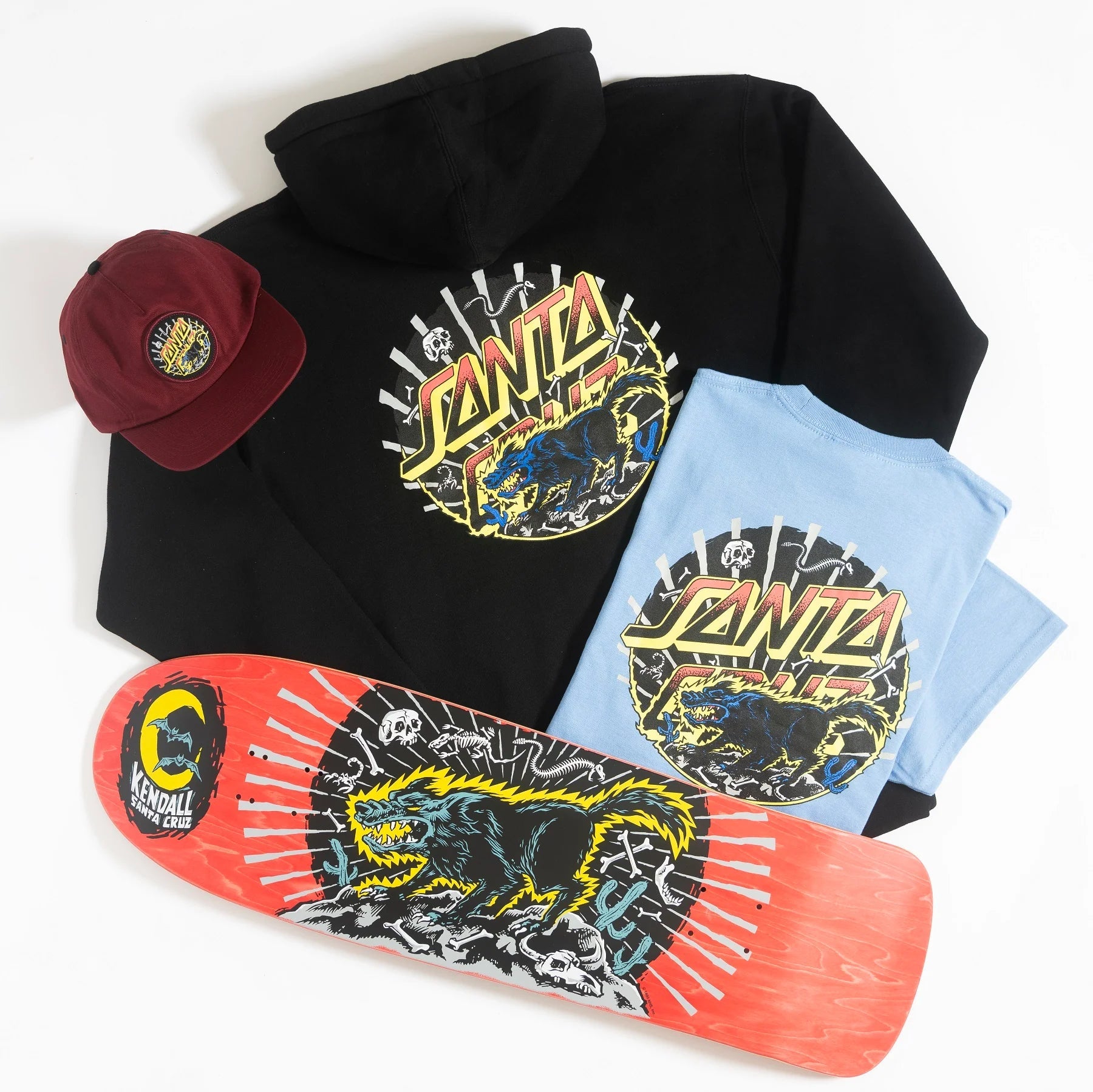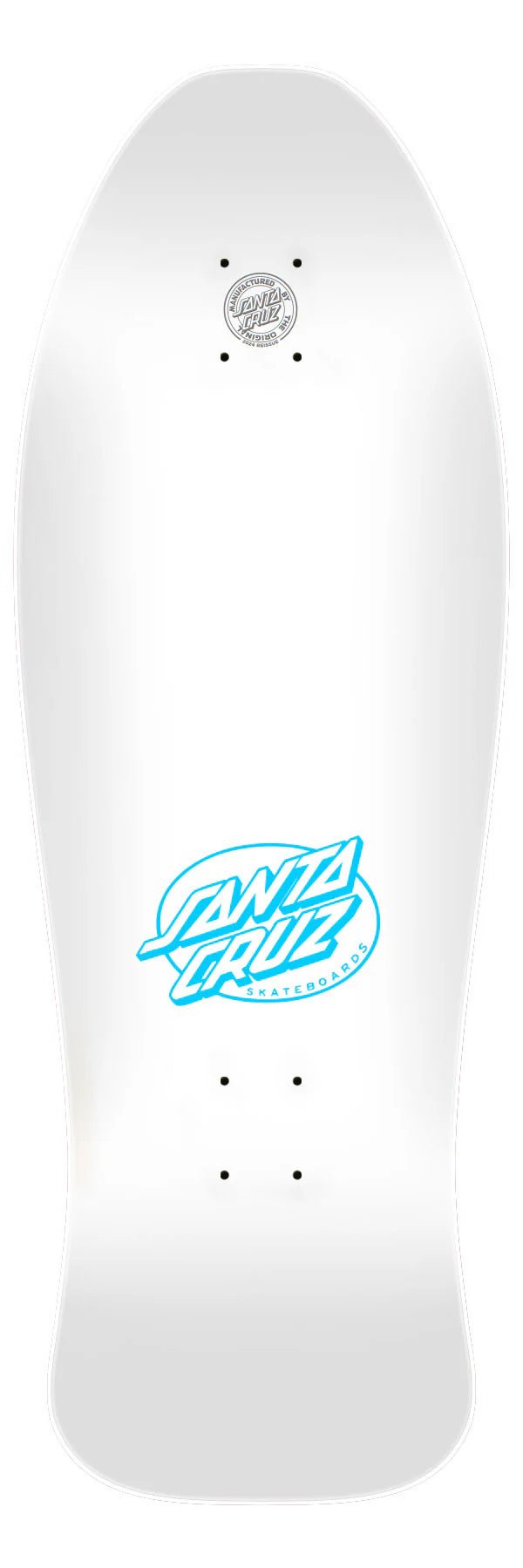SANTA CRUZ SKATEBOARDS
SHOP
Santa Cruz Skateboards is a Californian brand of skateboards born in the early 70s and is one of the most famous and longest existing skateboard brands. The brand with the iconic "Screaming Hand" or “Red Dot” logos can look back on a long history, which is perfectly represented today in the products of Santa Cruz Skateboards.
Read moreBUY SANTA CRUZ SKATEBOARDS ONLINE AT SKATETILLDEATH
Santa Cruz Skateboards offers a variety of different skateboarding products, but they are known for their complete skateboards. Santa Cruz offers many different shapes and styles of skateboards, so no matter what your preference is, you will be able to find the perfect skateboard for you.
Santa Cruz skateboards are perfect for beginners because they were originally designed for the average person. In the 1970s, they wanted to make their skateboards as easy to ride as possible to help grow the sport of skateboarding. Santa Cruz Skateboard appreciates beginner skateboarders because they know that if they can get more and more people into skateboarding, the sport of skateboarding will continue to grow. They have created their skateboards to be easy to ride and durable, making them a great option for beginners.
If you are looking for first class skateboard boards with various shapes, complete boards for beginners, then you will certainly find what you are looking for in the Santa Cruz store at Skatetilldeath.com.
Check our Santa Cruz complete skateboardsTHE STORY OF SANTA CRUZ
Telling the story of skateboarding may start by telling the story of Santa Cruz Skateboards.
In 1973, Richard Novak, Doug Haut and Jay Shuirman, three surfing friends from Santa Cruz, California, joined forces to create NHS Inc. The acronym NHS comes from the initials of their last names - Novak, Haut and Shuirman.
The three friends enjoyed spending their days skateboarding and surfing. In the early 1970s, all three had operated a "raw materials" business in Santa Cruz, California, which provided the materials used to create surfboards.
In the beginning, their surfboard brand business was struggling to stay afloat because the margins were low. But all of a sudden, they received what we might now consider a "historic" phone call from McCully's Bike Shop in Hawaii. The store asked NHS to design and produce an order of 500 skateboards. They accepted the order and in 1973 Santa Cruz Skateboards was officially born.
The batch of 500 skateboards sold out quickly, so the newly formed skateboard brand immediately received another order for 500 pieces.
From that point on, the company became a symbol of skateboarding culture. Santa Cruz's first advertisement was published in Skateboarder magazine, volume 2, number 3.
The very first Santa Cruz skateboards are reminiscent of what we would consider today a "mini-cruiser". The decks were small and even remotely resembled something like today's Penny Skateboards, but without the kicktail. They had very narrow trucks and large soft wheels with loud "loose-ball" bearings. At that time, skateboarding was mainly focused on downhill and racing, as few tricks had been developed yet. However, it wasn't long before skateboarding entered the era of skating on backyard pools and bowling alleys. Skateparks also began to appear across the United States.
With this, Santa Cruz responded to the mid to late 1970s skate styles by producing wider boards with features like kicktails and developing more advanced urethane wheels and precision bearings. At this time, the company also began working on its now iconic logo and developing more artistic graphics for its products.
All of these developments really paved the way for the look of today's modern skateboards. In the late 1970s, official skate bowl competitions appeared, which also created the foundation for sponsored skaters, teams and even professional skateboarding.
During the 1980s, Santa Cruz Skateboards fell on hard times due to the death of their co-founder, Jay Shuirman, who passed away from leukemia. With the death of their co-founder, Santa Cruz Skateboards fell on hard times during the 1980's due to the general decline in the popularity of skateboarding. Many skate parks were closing and the most popular skate magazines of the time began to go out of business. This made it difficult for the team to grow in the 1980s.
During the 1990s and 2000s, the skateboarding scene underwent dramatic changes from old school skateboarding to more modern street skate. Santa Cruz Skating quickly adapted to the changing skateboarding scene and began creating more modern skateboards that still had a reference to the old school skateboarding era. They became known for their old school skating references and old school graphics on their skateboards.

The first Santa Cruz Skateboard
A KEY INNOVATION IN SKATEBOARDING: THE ROAD RIDER WHEELS
An interesting and very important part of the Santa Cruz history is the creation of Road Rider wheels. When skateboarding started it was steel wheels directly on the trucks axles (yes, it does sound odd!) The industry then evolved and introduced clay wheels that would wear and break over time.
In 1972, the very first urethane wheel came on the market, the famous Cadillac skateboard wheel by Frank Nasworthy. It revolutionized every trick you could do on a skateboard. In 1974, Santa Cruz responded with their own Road Rider Wheels.
Urethane is still what we make our wheels out of today, but the reason the Road Rider's were so well received is because they had the very first precision ball bearings. Until then, all wheels, including Cadillac Wheels, simply had loose ball bearings so they could turn.
But the birth of Road Riders was rather unorthodox - and it all happened by stars aligning nicely up!
An event started it all. Richard Novak and Jay Shuirman were assembling ball-bearing wheels on trucks in their workshop one day and Jay dropped a barrel full of nearly 100,000 individual loose ball bearings by accident. Oopsie! That very same day, a man named Anthony Roderick entered the shop. He was working for a company in Rhode Island called “Quality Products”. Holding a sealed precision bearing in his hand, Anthony wondered if there was an application for skateboard wheels…
The answer was: “hell yes!”
With “Quality Products” leading the production and NHS handling the marketing and sales, the Road Rider precision skateboard wheel was born.
In 1975, these wheels conquered the skateboarding world, selling over a million sets of Road Rider wheels. This gave NHS a massive infusion of cash which they used to help support Santa Cruz skateboards, allowing them to build one of the best skateboarding teams of the time.
In 1978, the alliance between NHS and Ermico Enterprises led to the creation of "The Independent", an innovative truck model initially available in 88mm and 109mm.
As a result, NHS and Santa Cruz had built a significant market share for decks, wheels and trucks, everything you need from a Santa Cruz complete skateboard!

ANOTHER INNOVATION: GOING CONCAVE!
Santa Cruz was one of the very first brands to introduce concave on skateboard decks in the 80s. They released a series of boards that were some of the first skateboards with concave. There were different shapes and degrees on the concave ranging from 2 degrees to 6 degrees bevel.
THE ICONIC LOGOS AND GRAPHICS SANTA CRUZ SKATEBOARDS
The “Red Dot” logo and the “Screaming Hand” logo are the two iconic logos of Santa Cruz.
The Santa Cruz Red Dot logo is the first of the logos featuring a red dot and the iconic Santa Cruz slanted font with the A's in the form of triangles. It was designed jointly by Jay Shuirman and Jim Phillips.
Soon after, the Screaming Hand logo was born and became just as iconic and legendary as the original red dot logo.
It represented a big step forward in the world of skateboard graphics because of its bold lines and bright colors, and because it used real artwork on a skateboard brand.
SANTA CRUZ LOGO | THE RED DOT
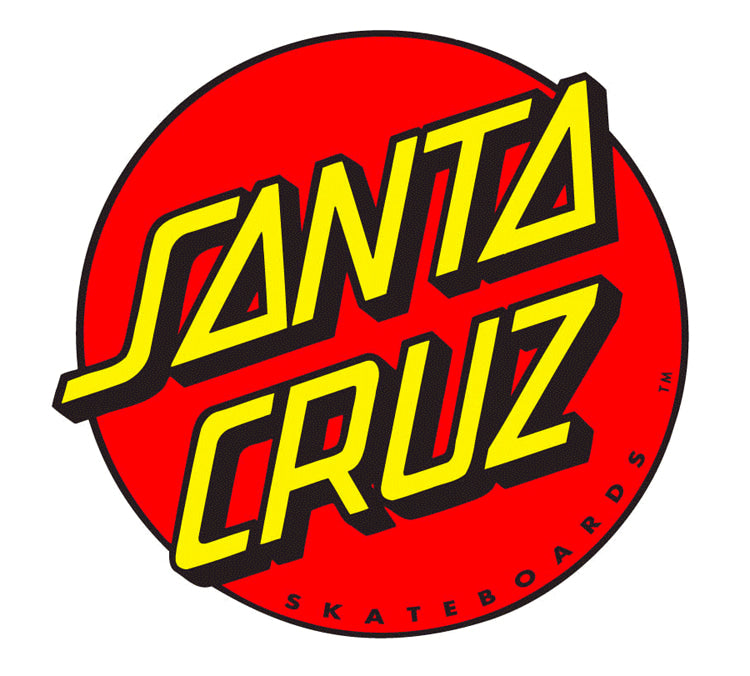
SANTA CRUZ LOGO | THE SCREAMING HAND
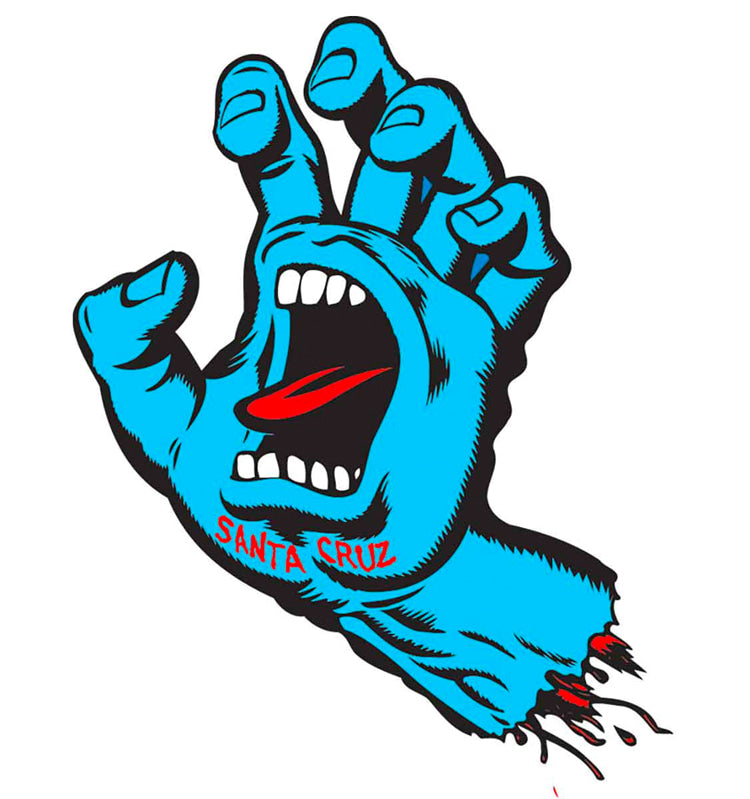
THE ROLE OF JIM PHILLIPS
Santa Cruz wouldn't be so iconic today without the artwork of Jim Phillips. In the early days of skateboarding, decks and marketing were mostly about fonts or one-color graphics.
In the mid-1970s, NHS began employing Jim who was an independent artist. Some of Jim's early work includes the creation of the Road Rider Wheels logo (see above on the ad), the first Santa Cruz "slant" logo, the Santa Cruz "Red Dot" and the Independent Trucks "cross" logo.
Virtually all of these logos are historic or continue to play an integral role in skateboarding, but it wasn't until the mid-1980s that Jim created several pieces of graphic art that truly made skateboarding history. Starting in 1984, Jim created the "Rob Roskopp" deck series which was a best seller until 1989. In 1985, Jim created the now incredible "Screaming Hand" logo, which can still be found on many Santa Cruz board graphics today and has even been the focus of worldwide art shows.
Jim is known for the Independent Truck Company logo, Steve Olson's checkered board graphic, Rob Roskopf's series, Jeff Grosso's "Toybox" series, Jason Jessee's "Neptune & Sungod" board, Salba Tiger board, Natas SMA Panther board, etc. All of these models have become incredibly sought after and treasured classic skateboards.
For Santa Cruz in the 1980s, Jim Phillips' artwork played a very important role in the success of the Santa Cruz brand as well as the overall brand image the company continues to convey today.
THE SANTA CRUZ TEAM
EARLY TEAM:
As said before, Santa Cruz has always had one of the most ground breaking teams in skateboarding. In the 1970’s they had Jon Hutson the #1 slalom rider in the world representing the brand.
Then as skateboarding transitioned into pool skating, they gather an all star list of surfers and skaters on their team including the iconic: Steve Olson, Duane Peters, and Steve Alba.
STEVE OLSON: In 1977 he joins the Santa Cruz skateboards team and is one of the biggest names in skateboarding. In 1979 he wins Skater Of the Year Award from Skateboarder Magazine. You can listen to him tell the story on his episode of the Nine Club podcast.

SALBA: As skateboarding progressed to get bigger and gnarlier. The “Salba Bevel” introduced concave to skateboards. Making the boards more rigid and allowing for a burst forwards in the progression of skateboarding we saw in the 80’s.

DUANE PETERS: 1979 he moves over to Santa Cruz from Dogtown and becomes one of the pioneers of skateboarding.
JEFF KENDALL: The Jeff Kendall graffiti boards has tons of different iterations as the screens slightly changed at Santa Cruz, people working in the factory would add their own little things into the graphics. The original graffiti deck has his girl friend at the time’s name on it “Jenny” and when the re-issues came out later in life, Kendall his up David Freil in the print department and David helped him add his wife’s name “Maureen” into the graffiti replacing the Jenny tag. You can read more of this story in the Disposable Skateboard Bible by Sean Cliver.
